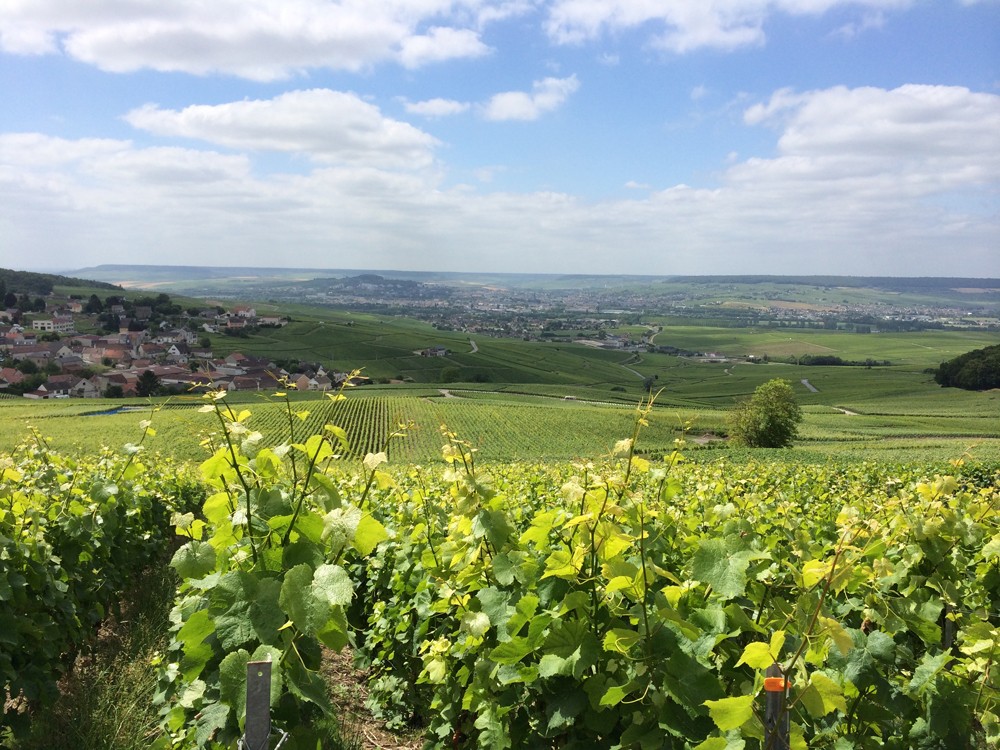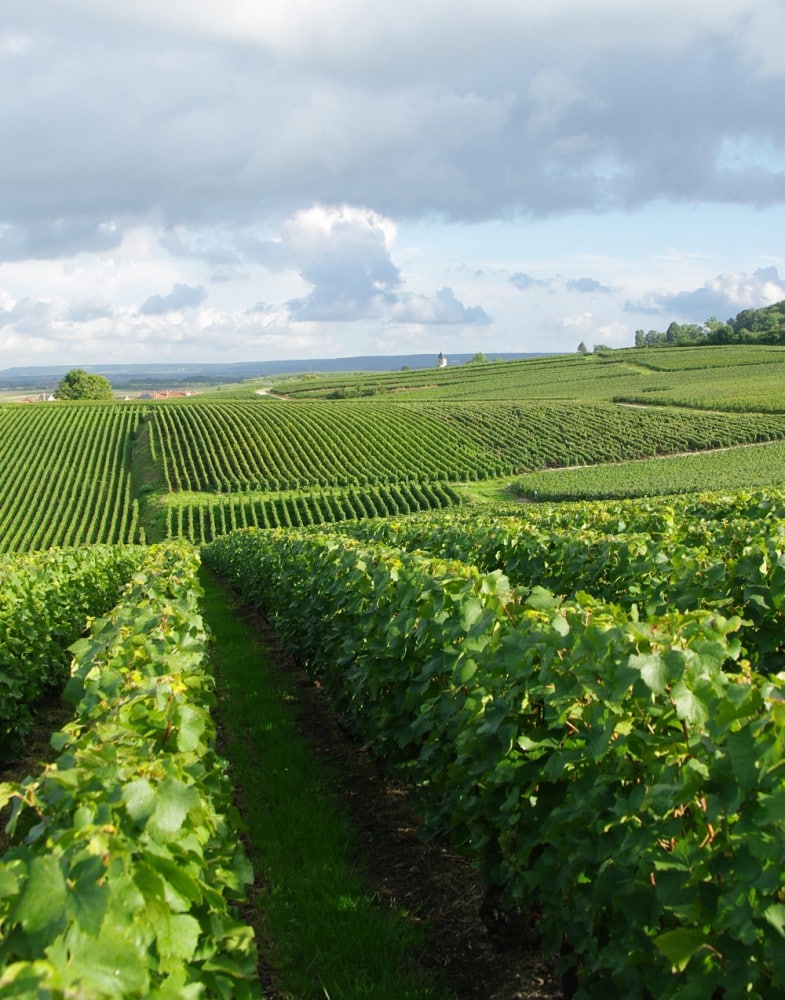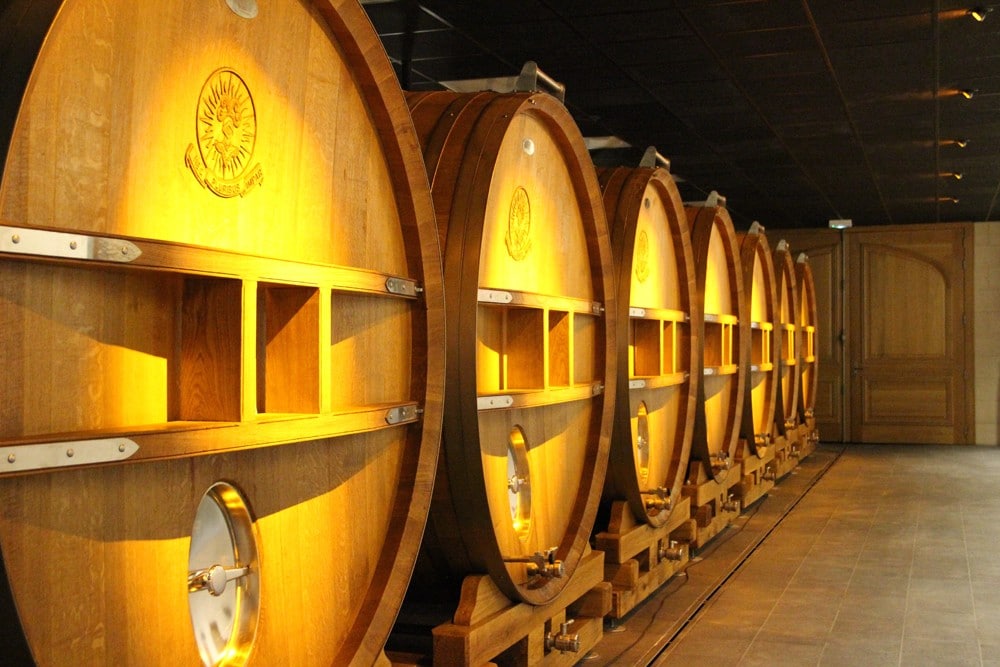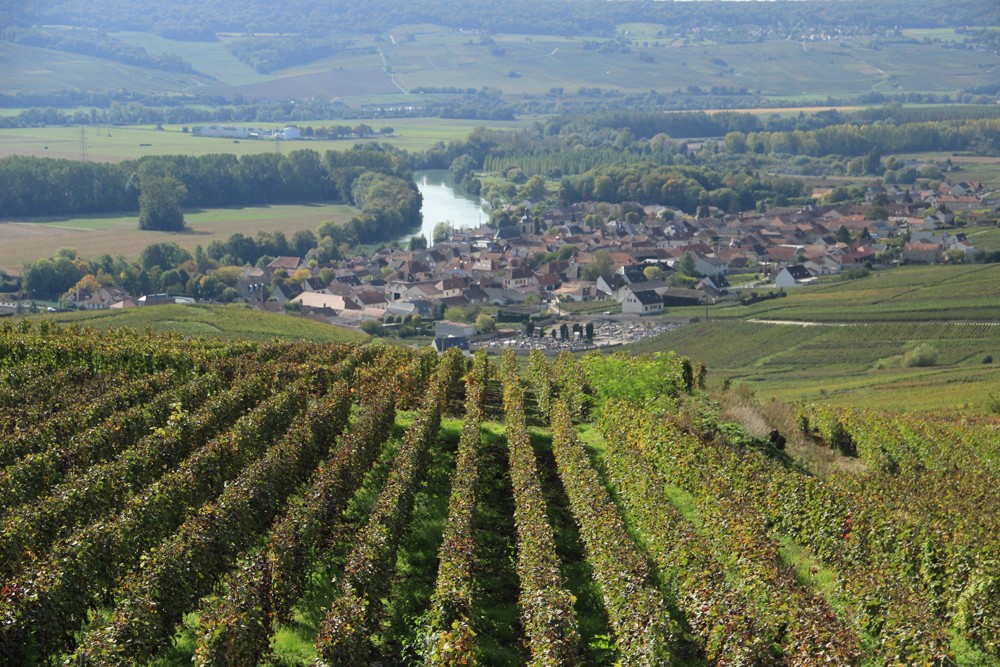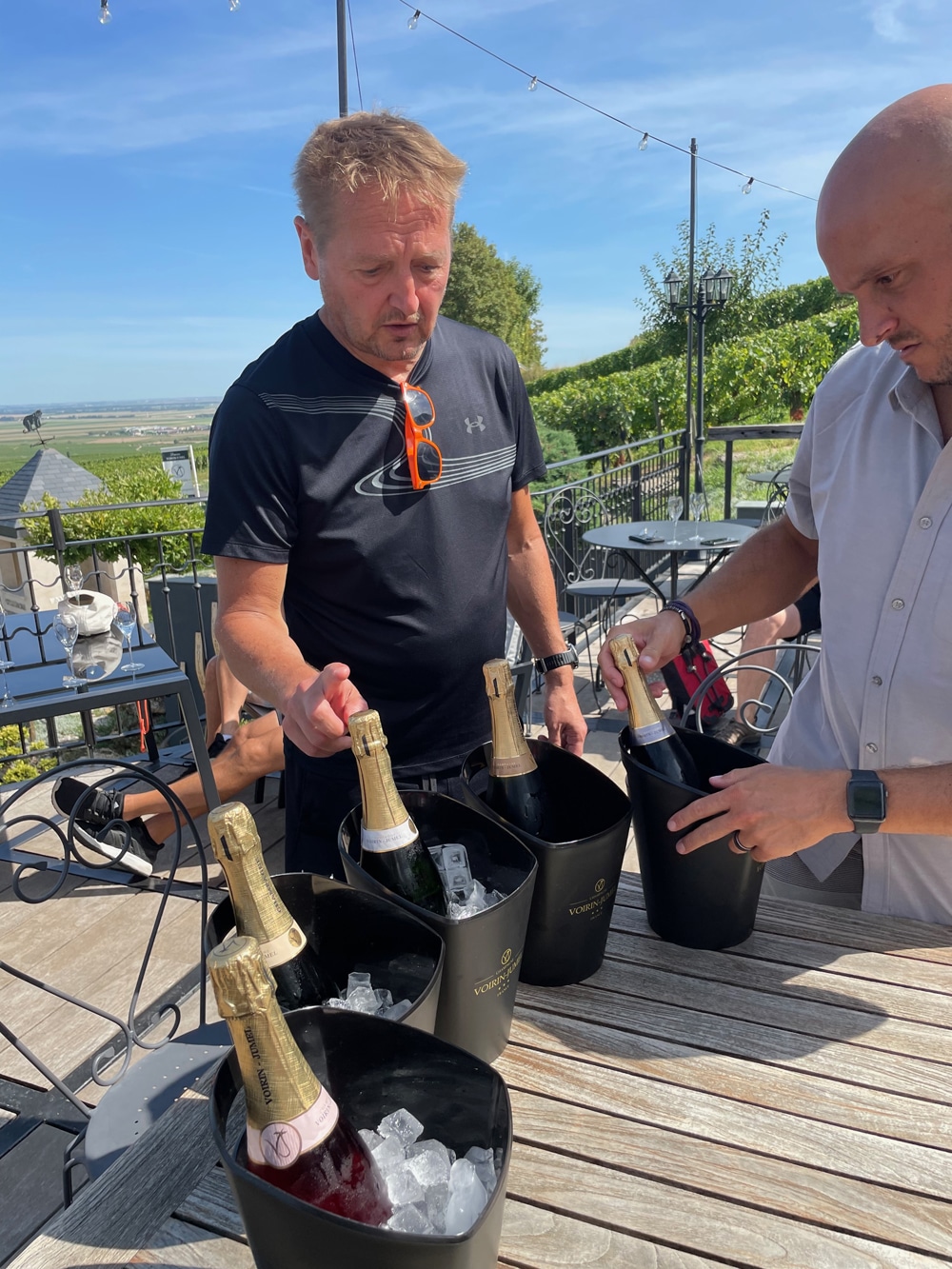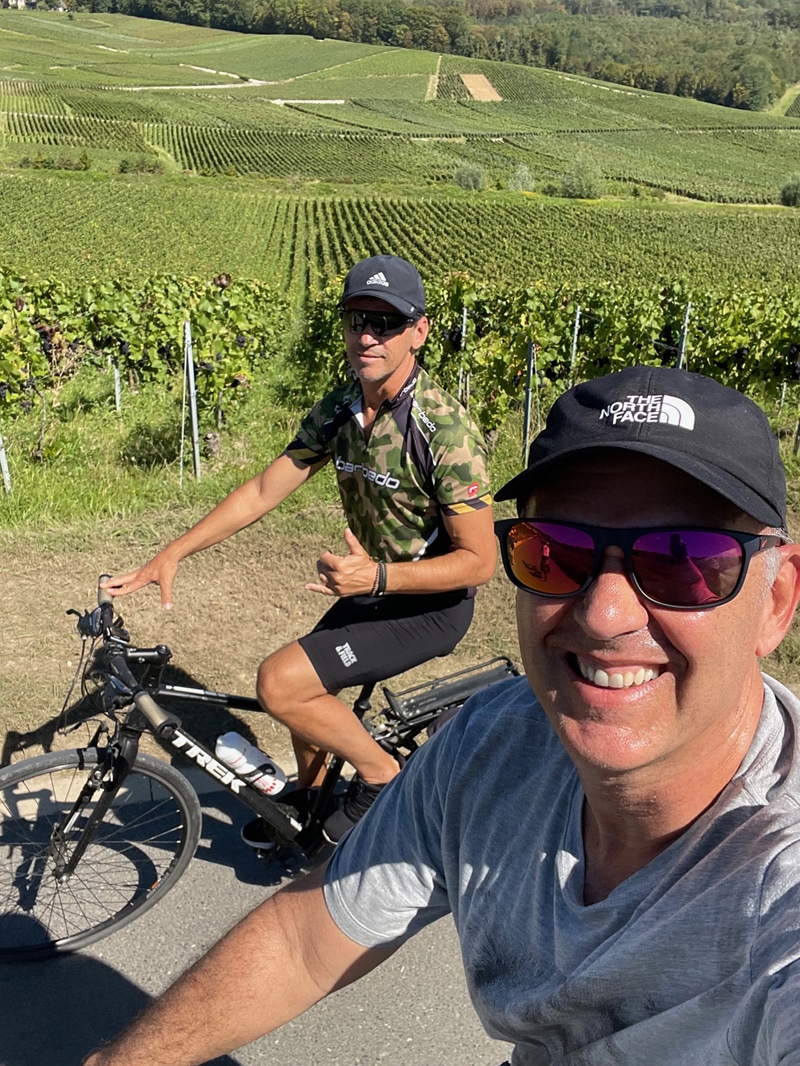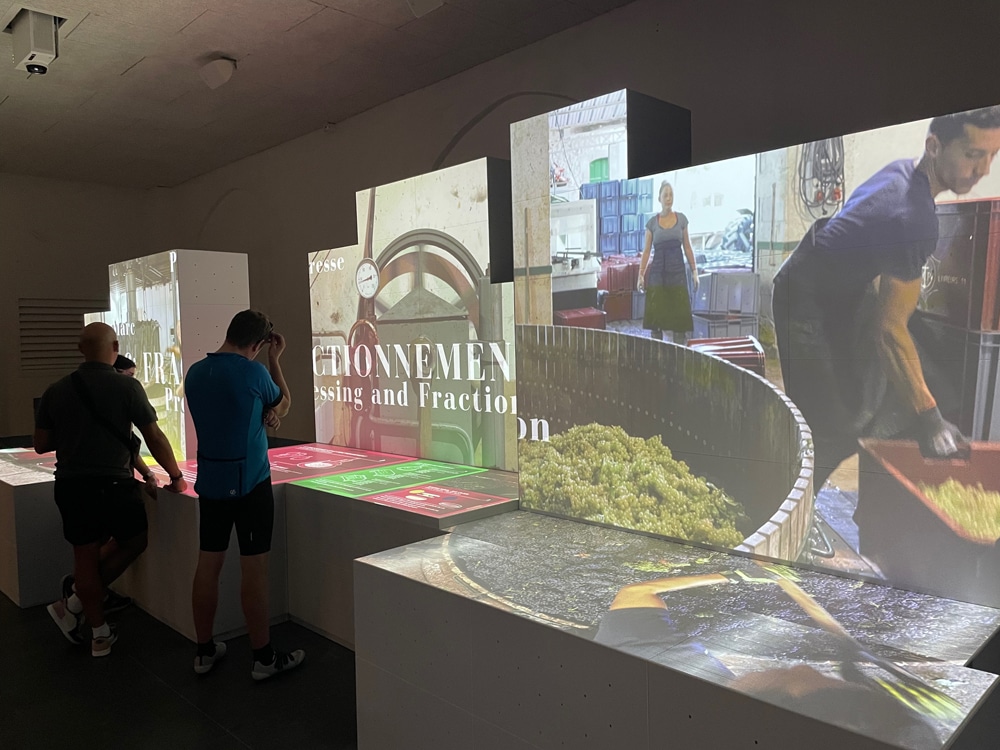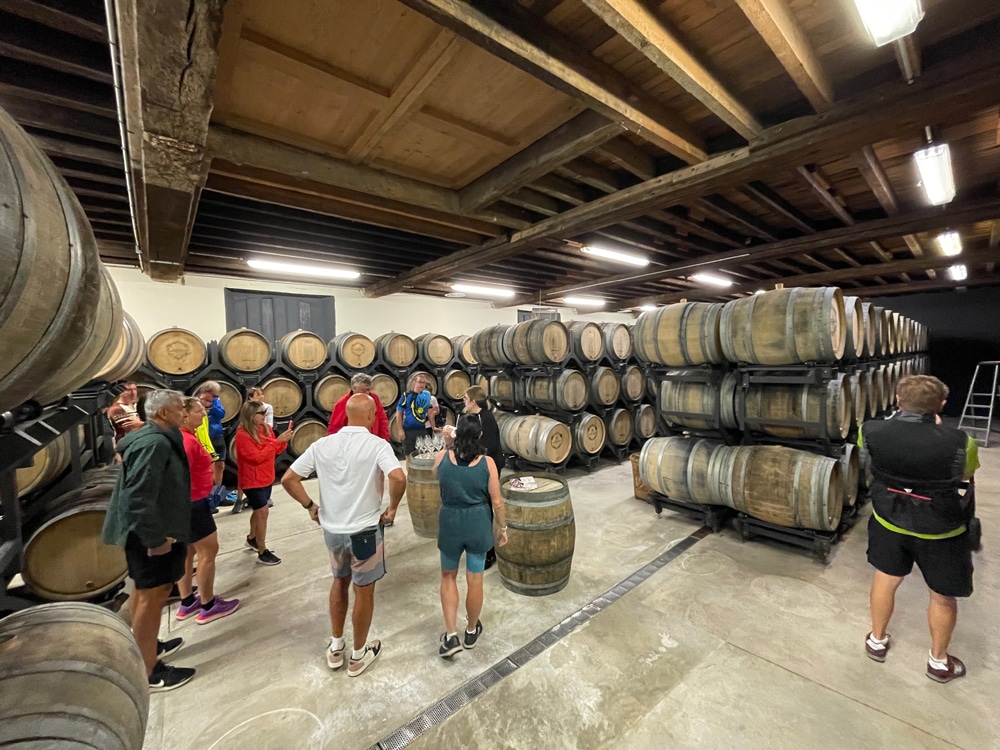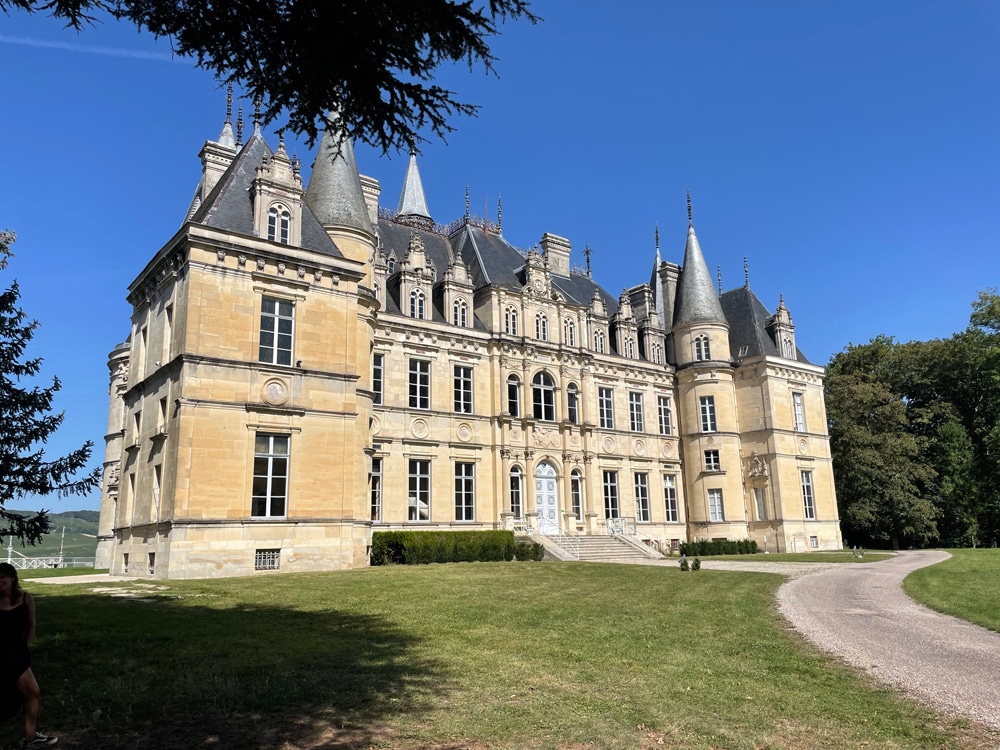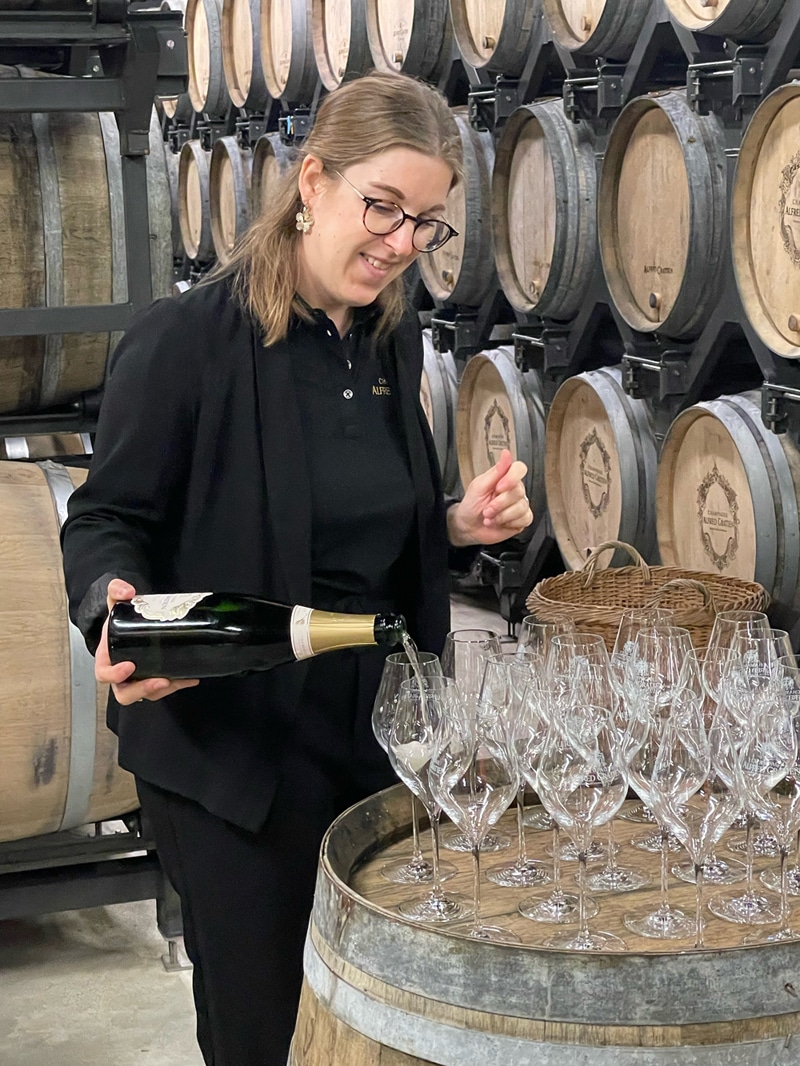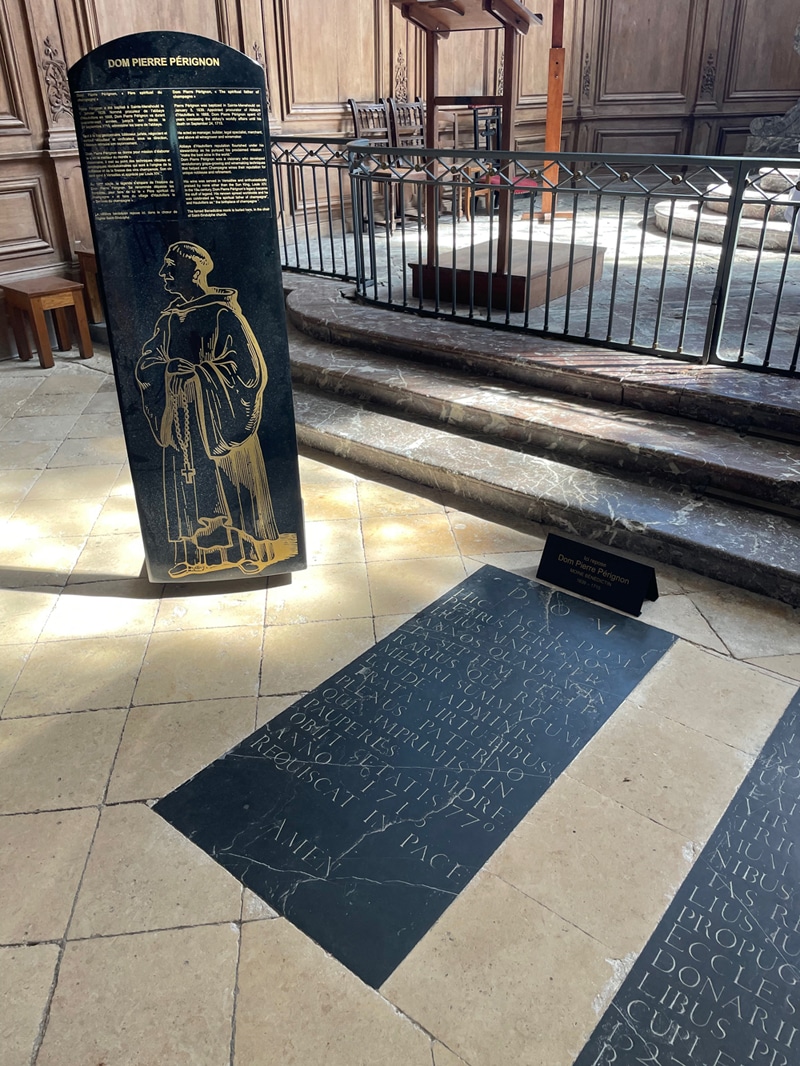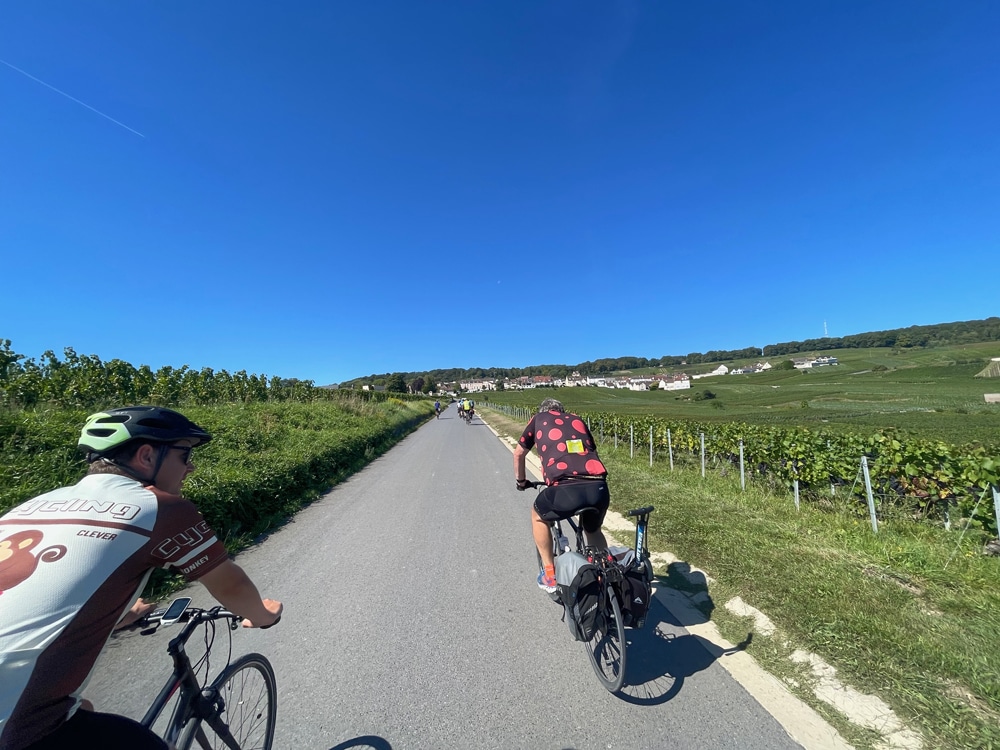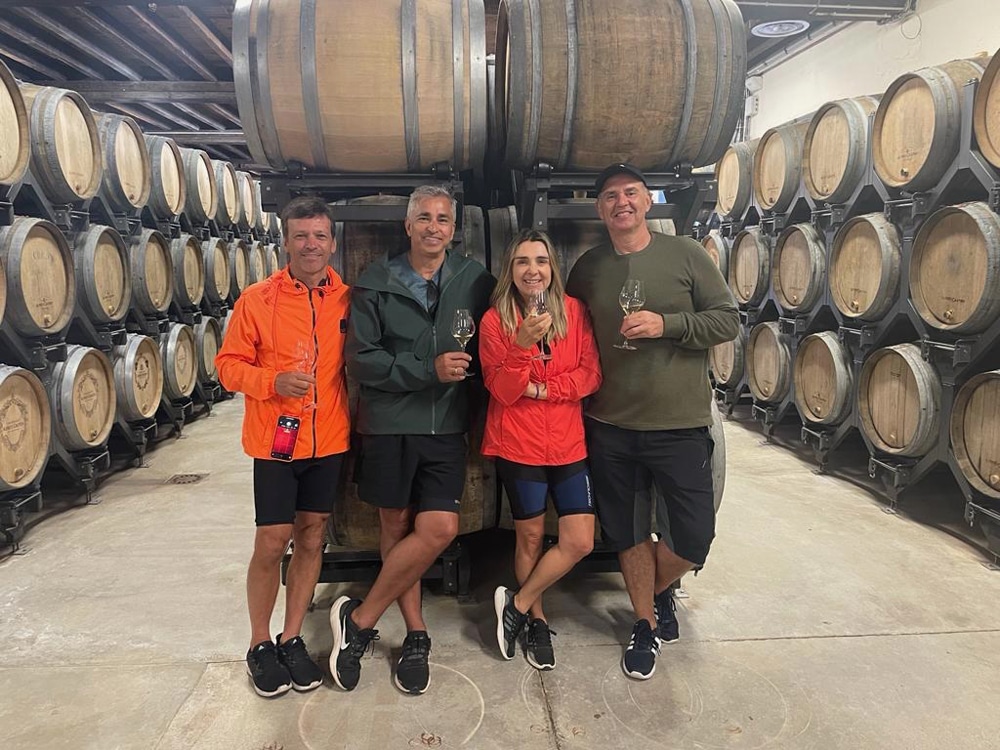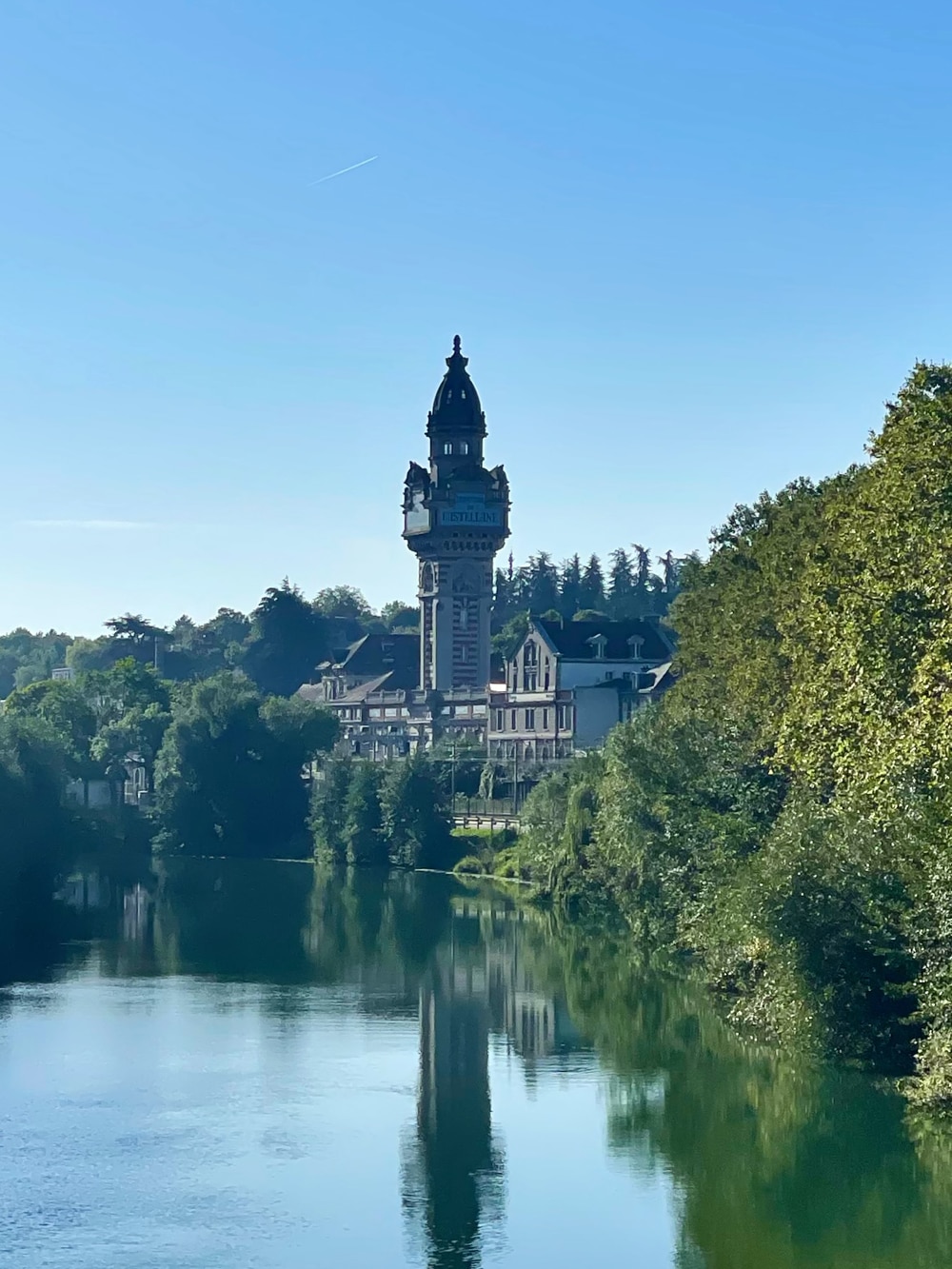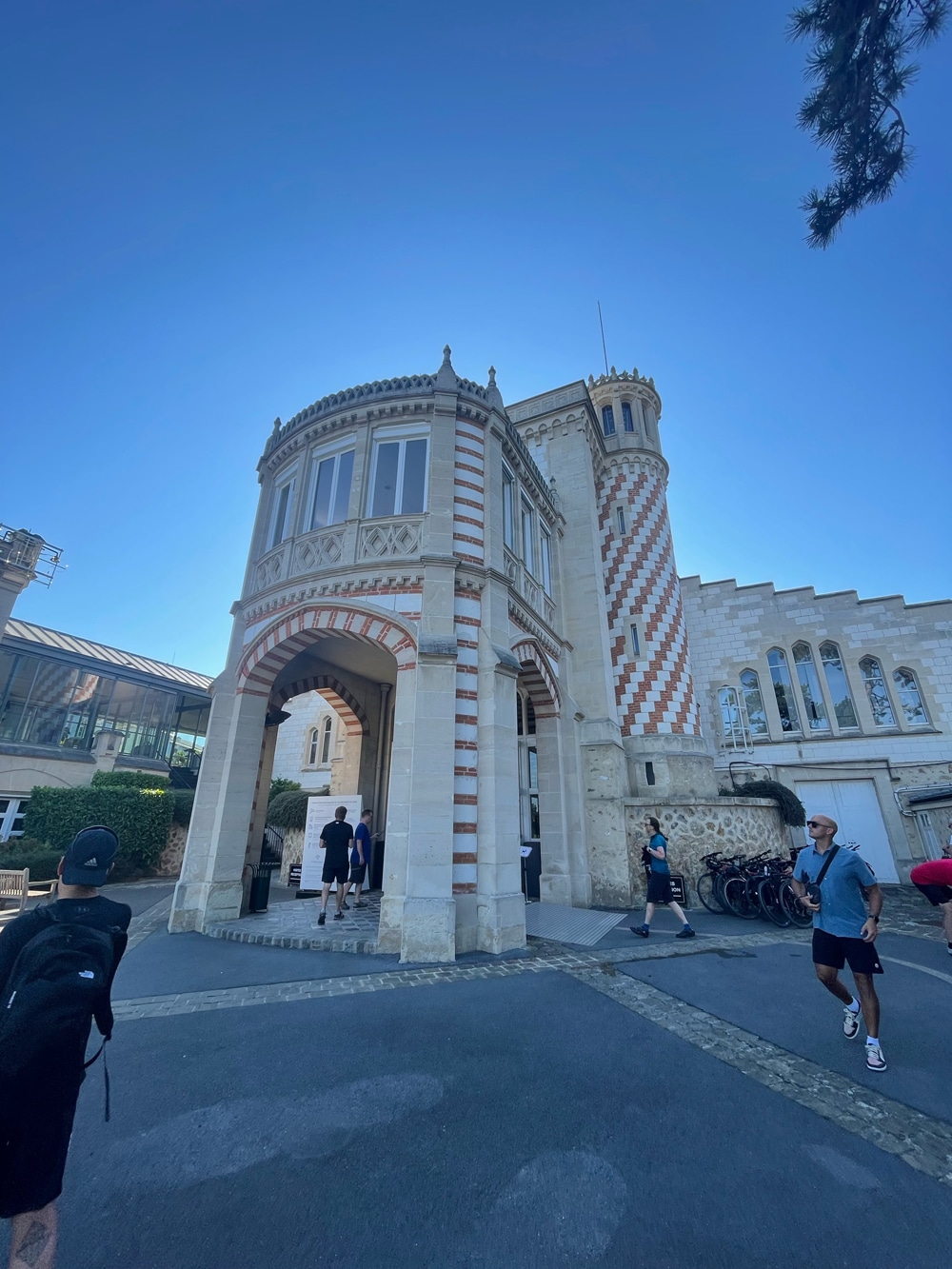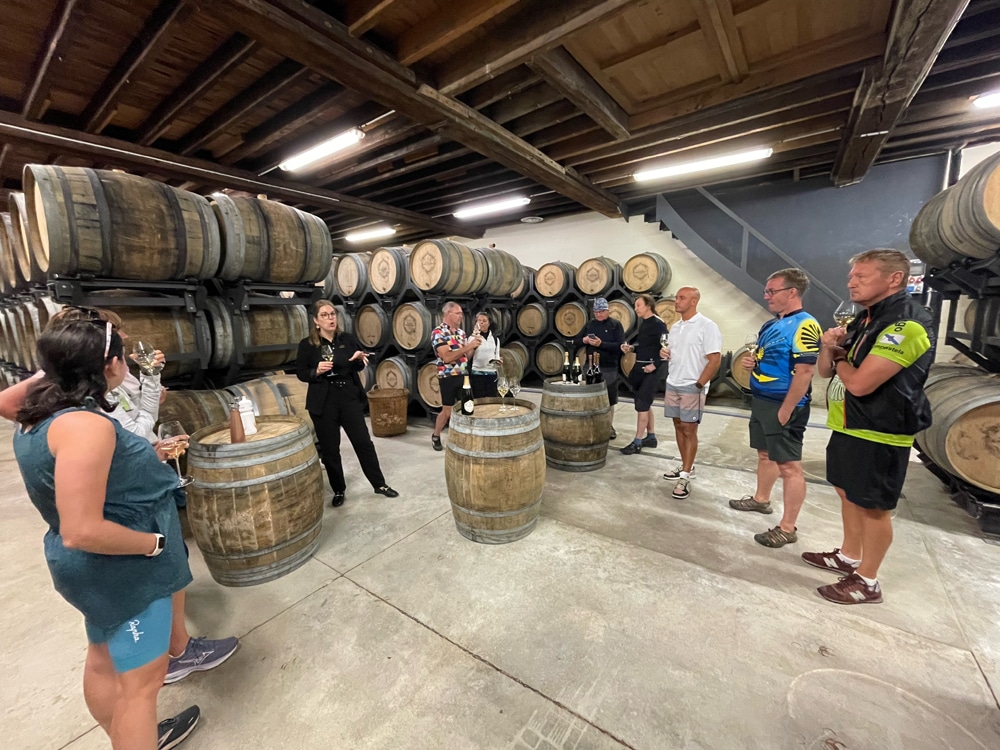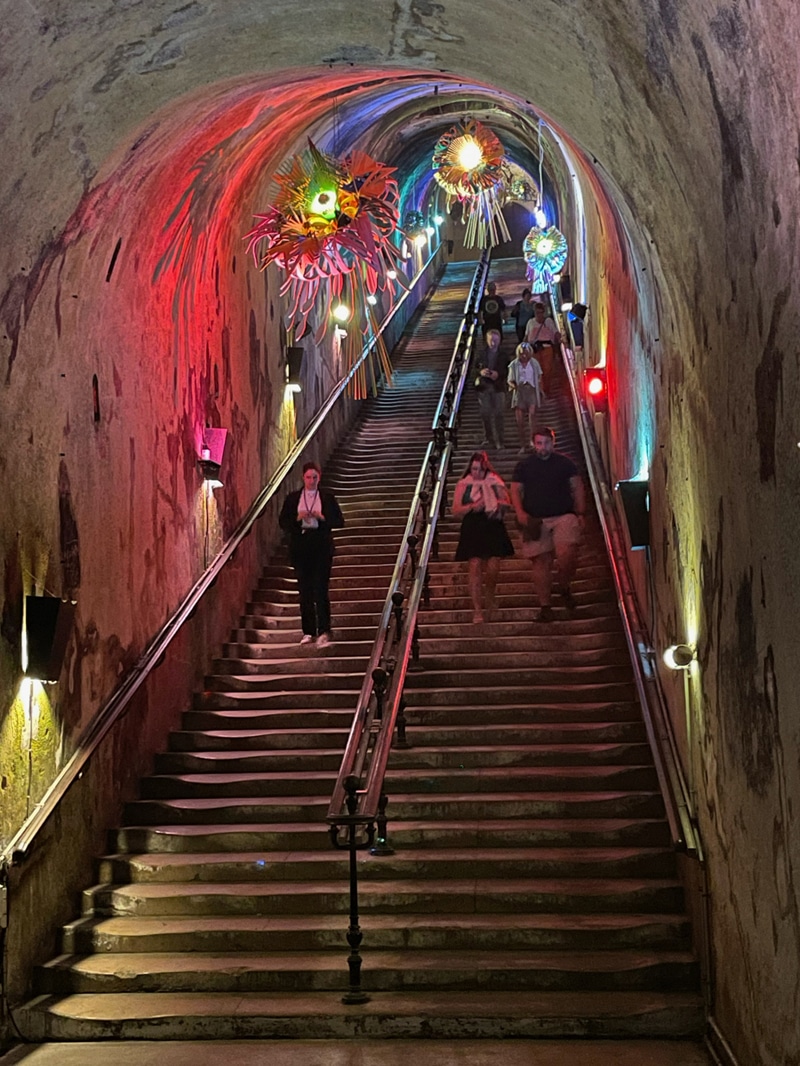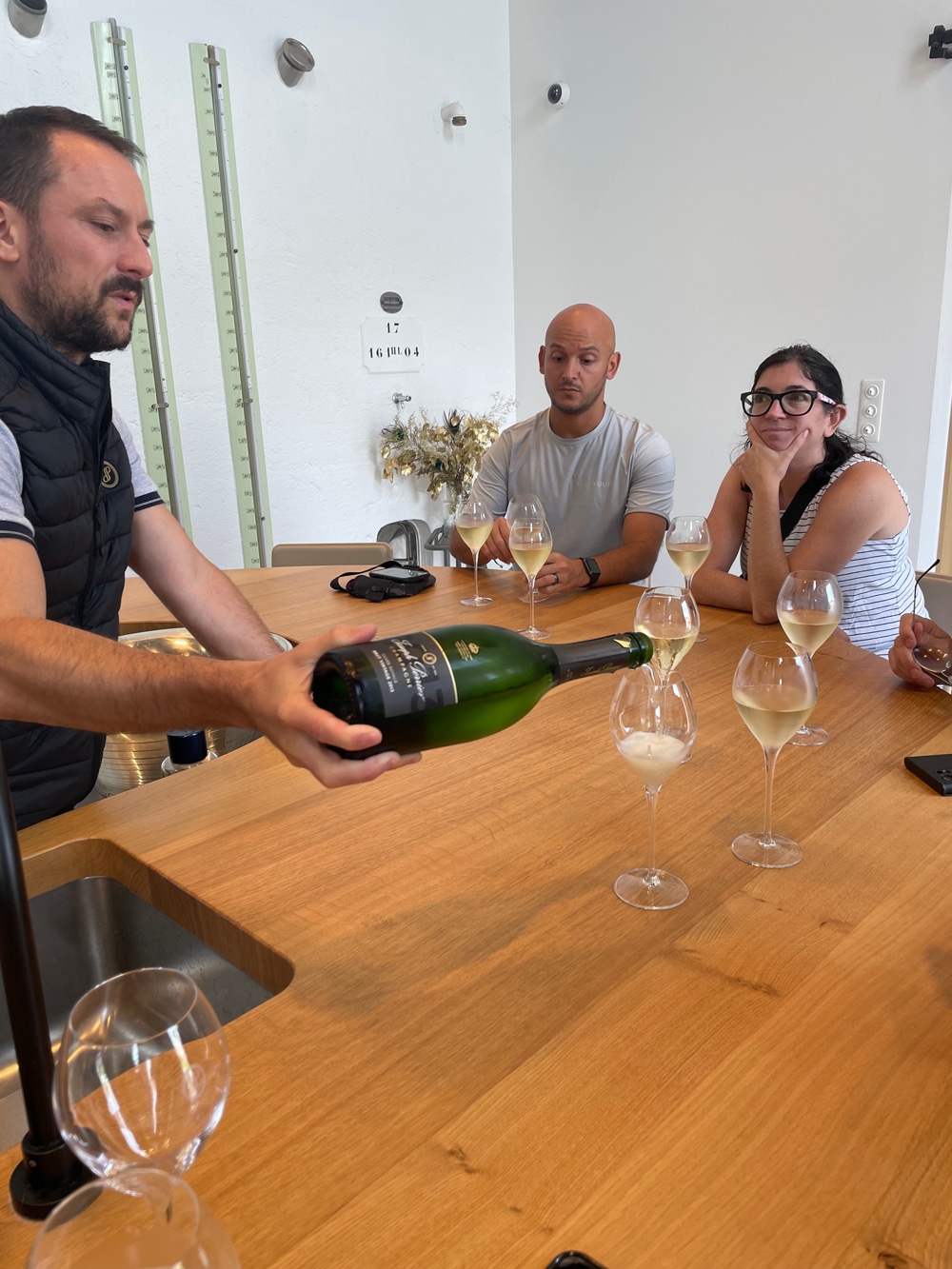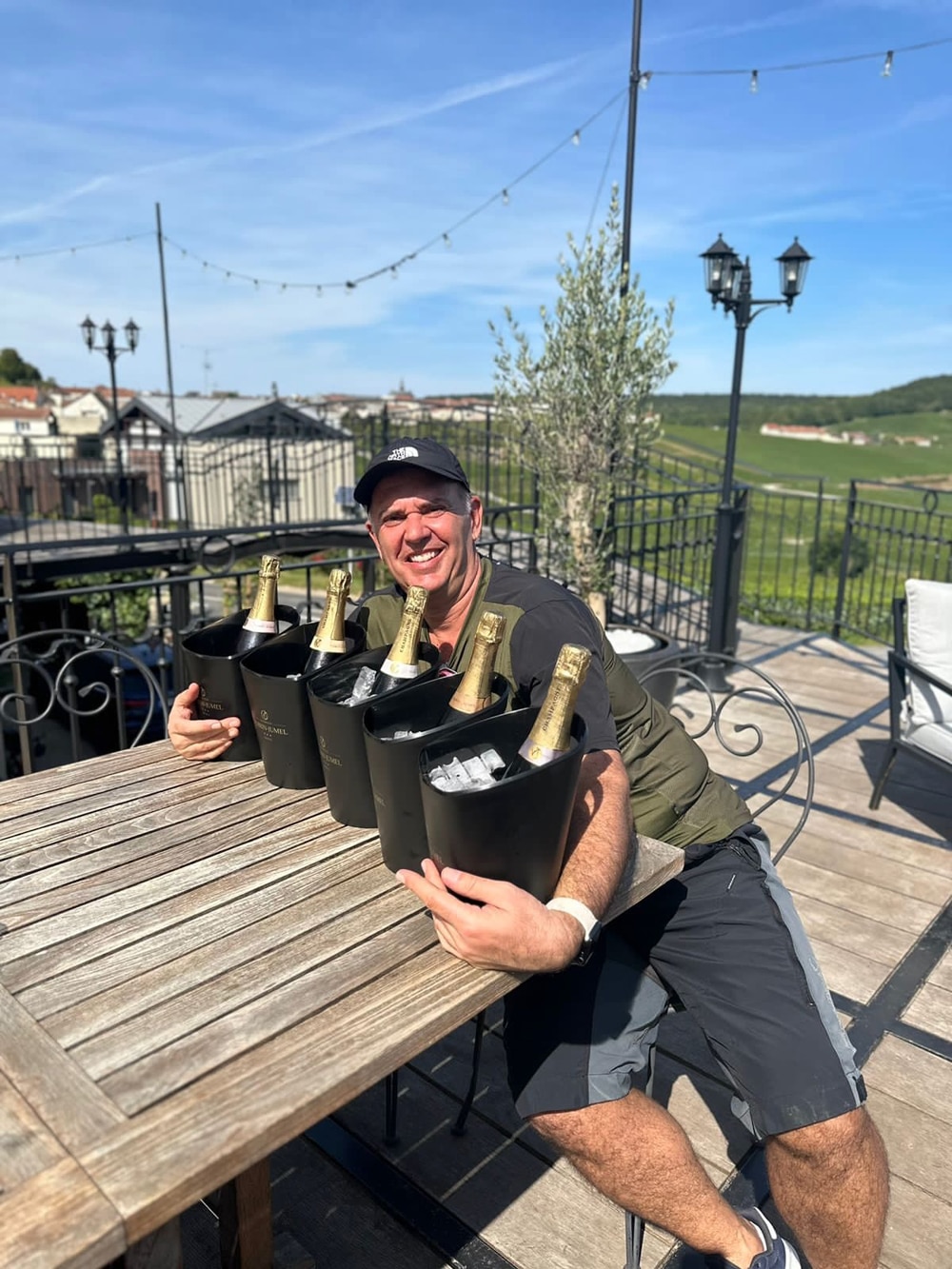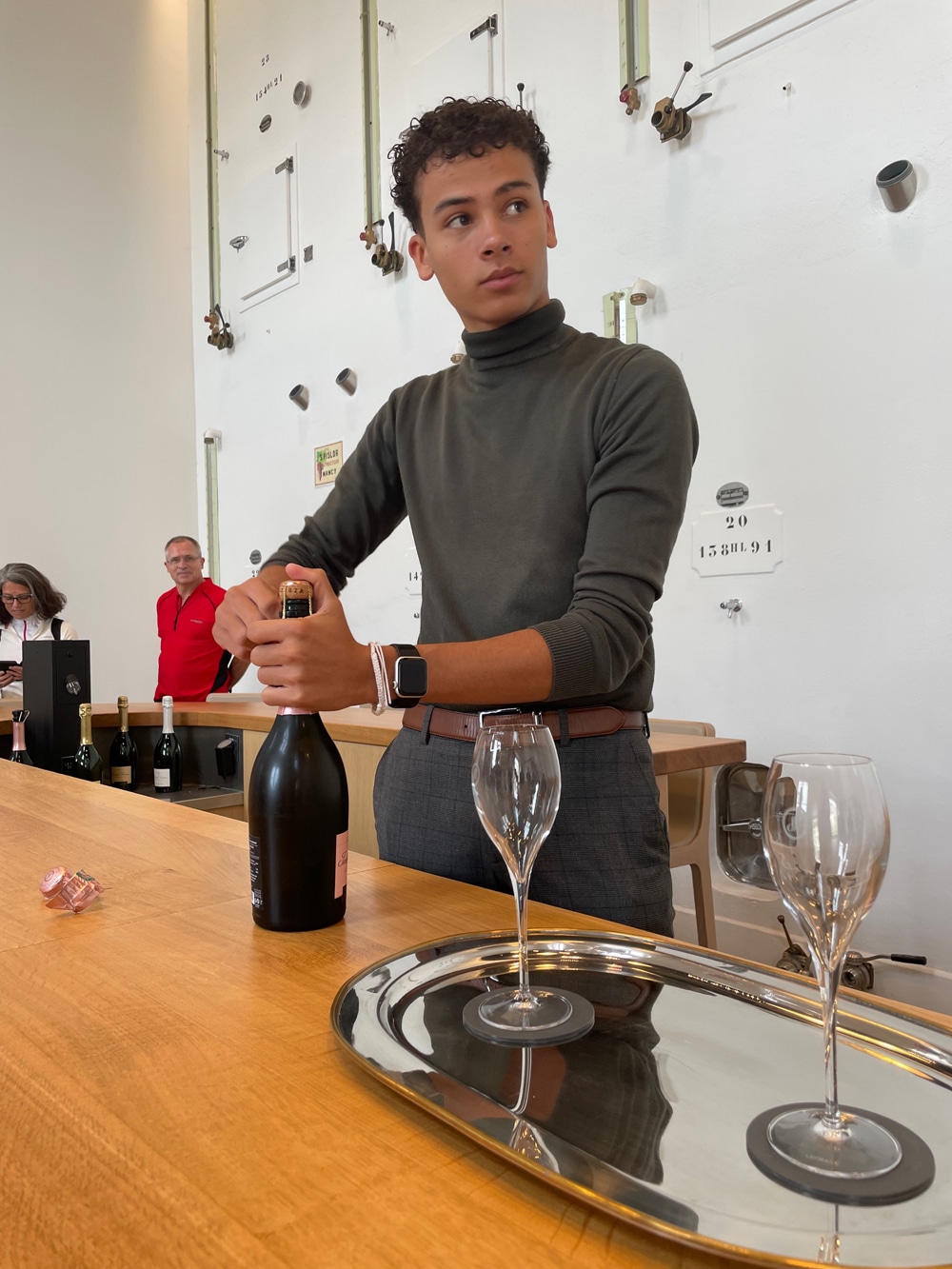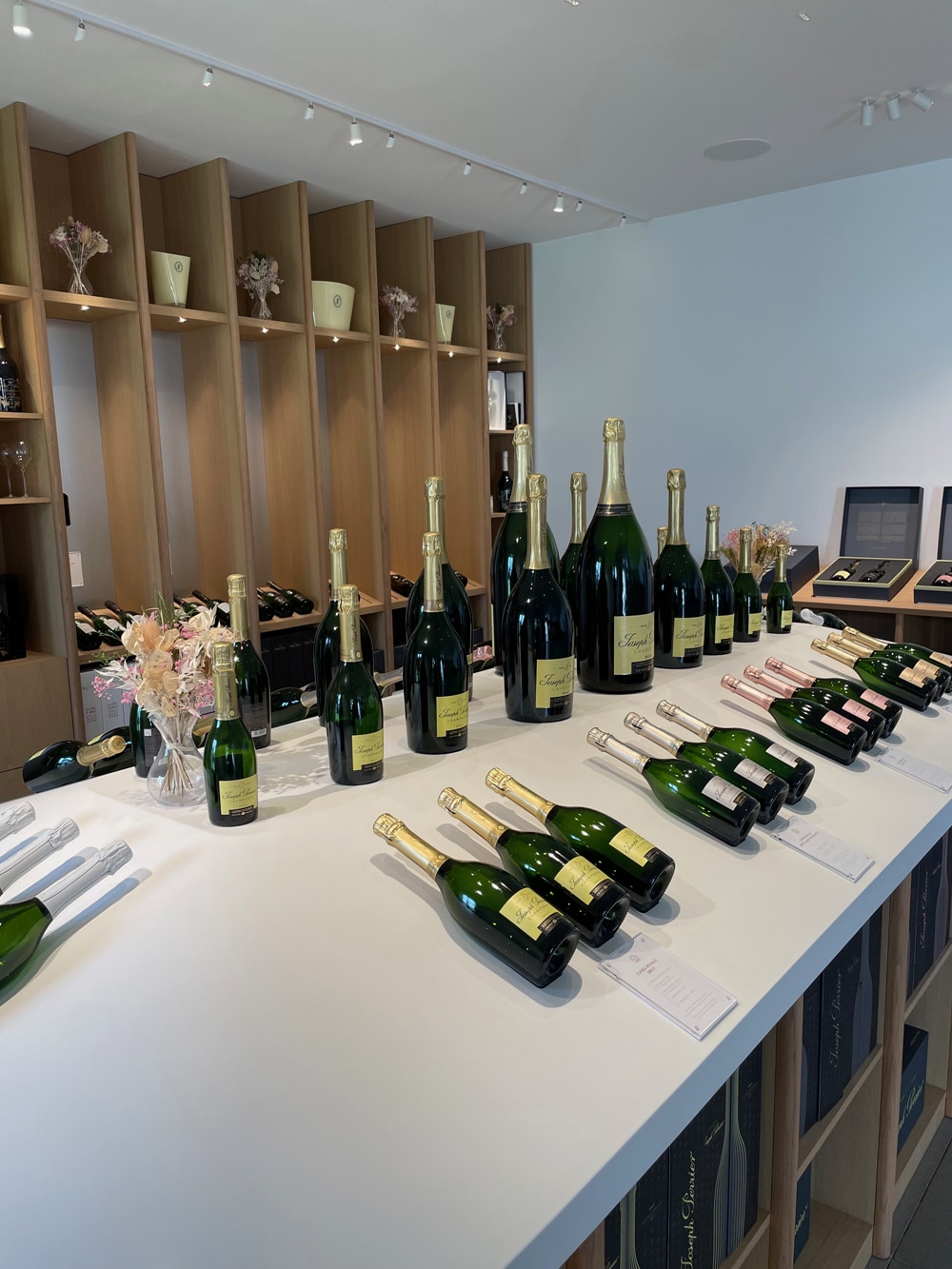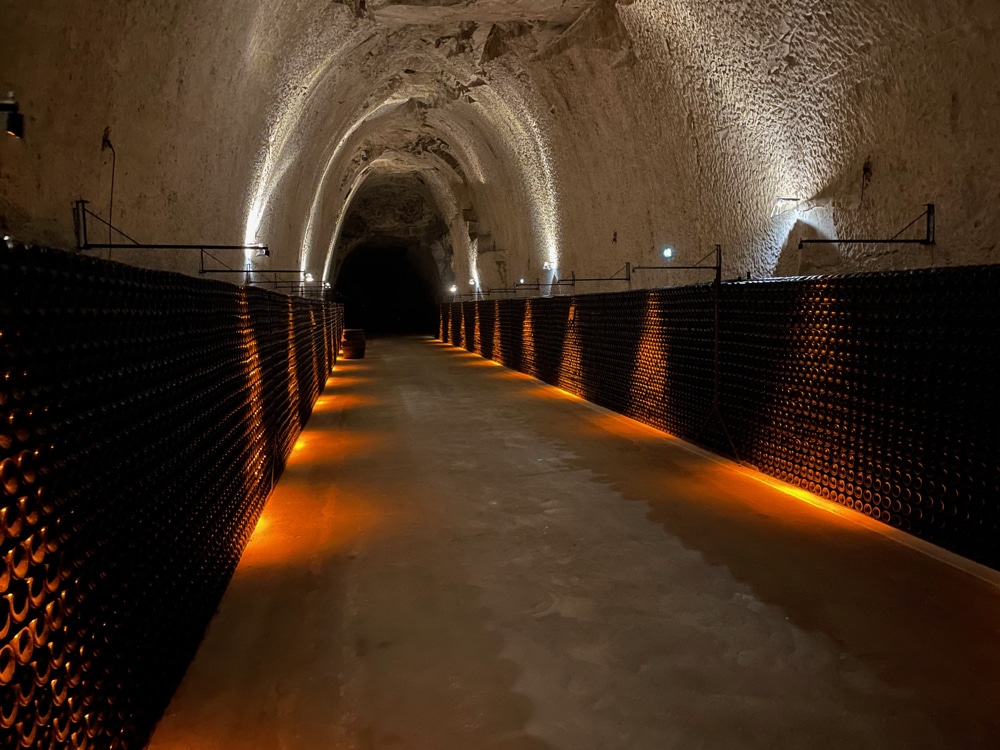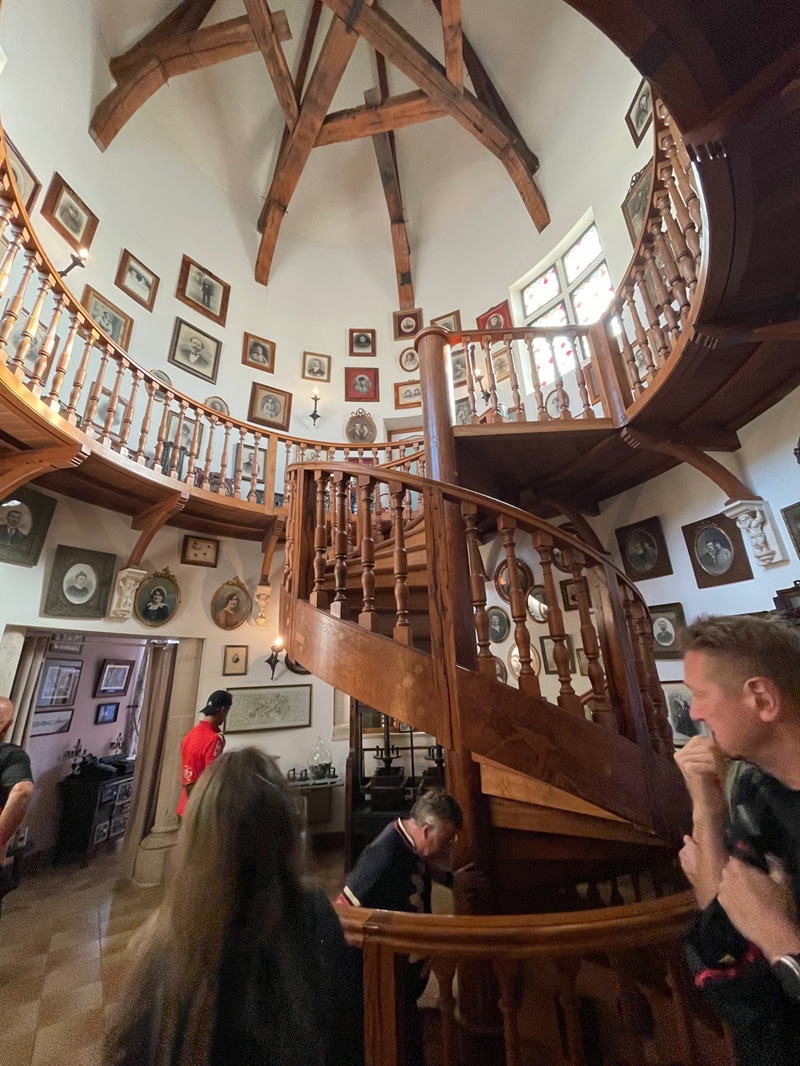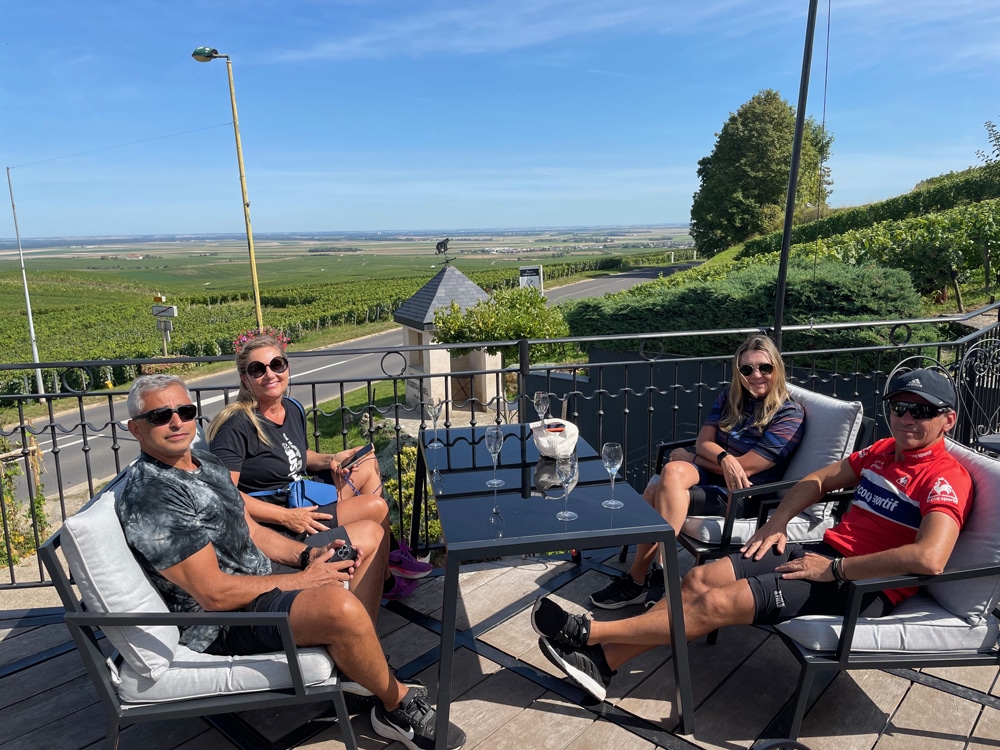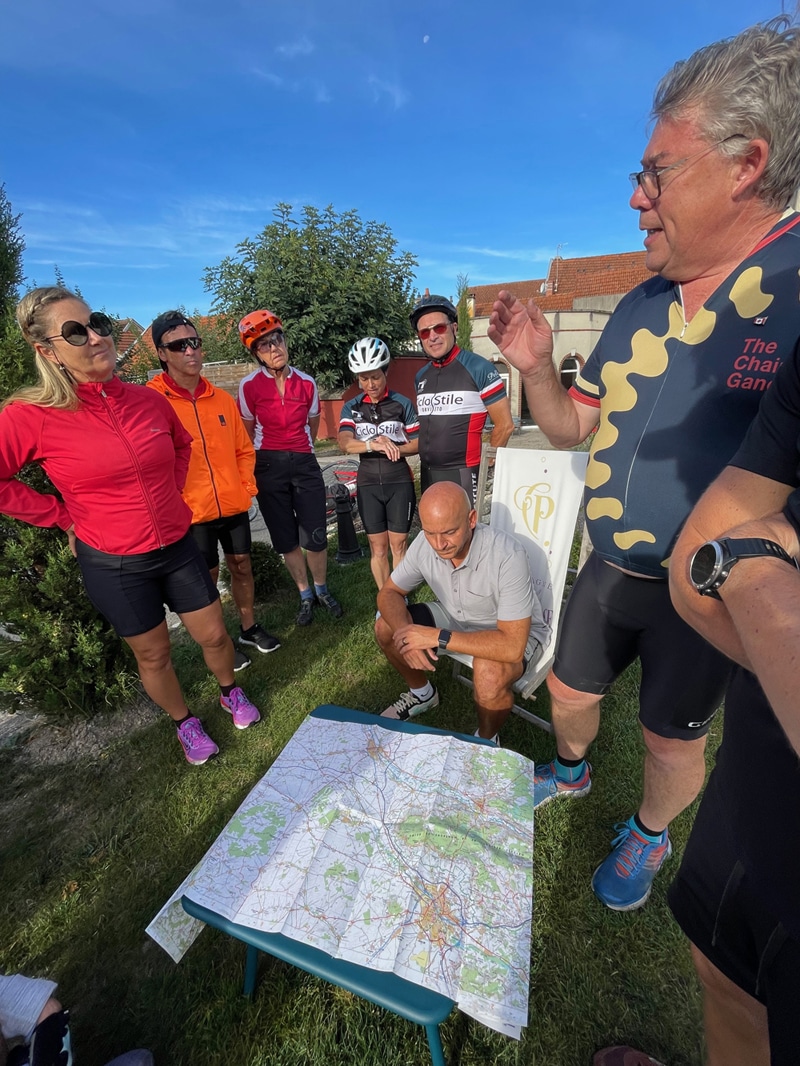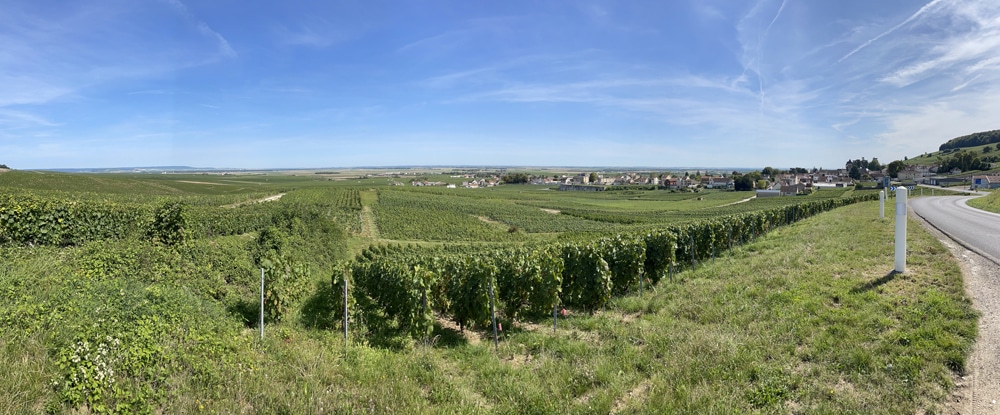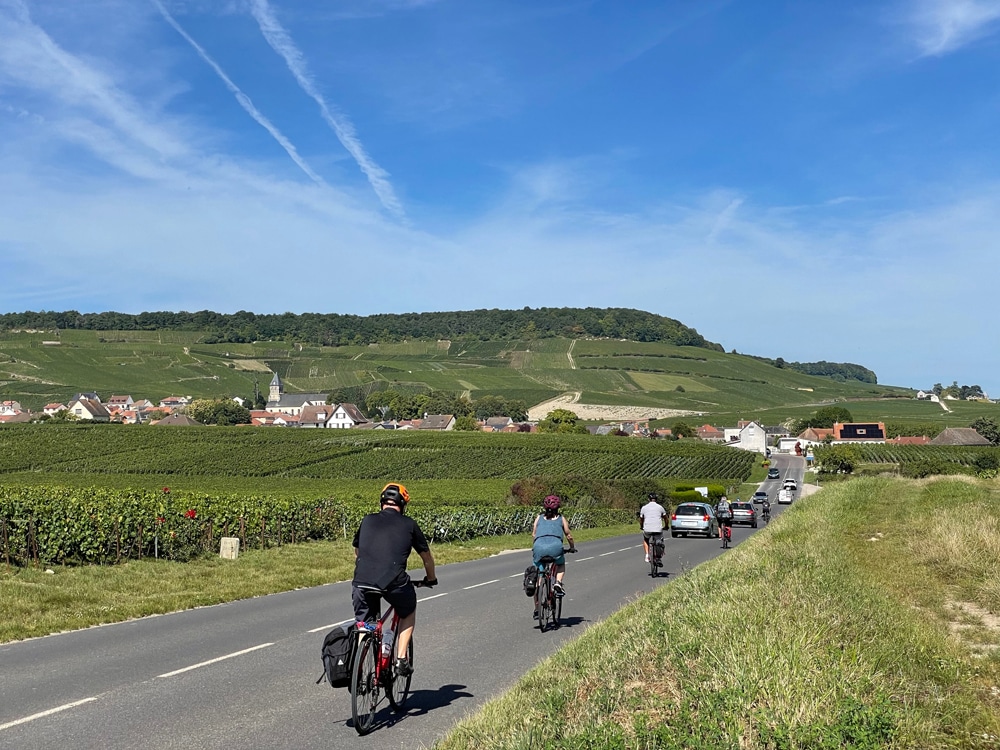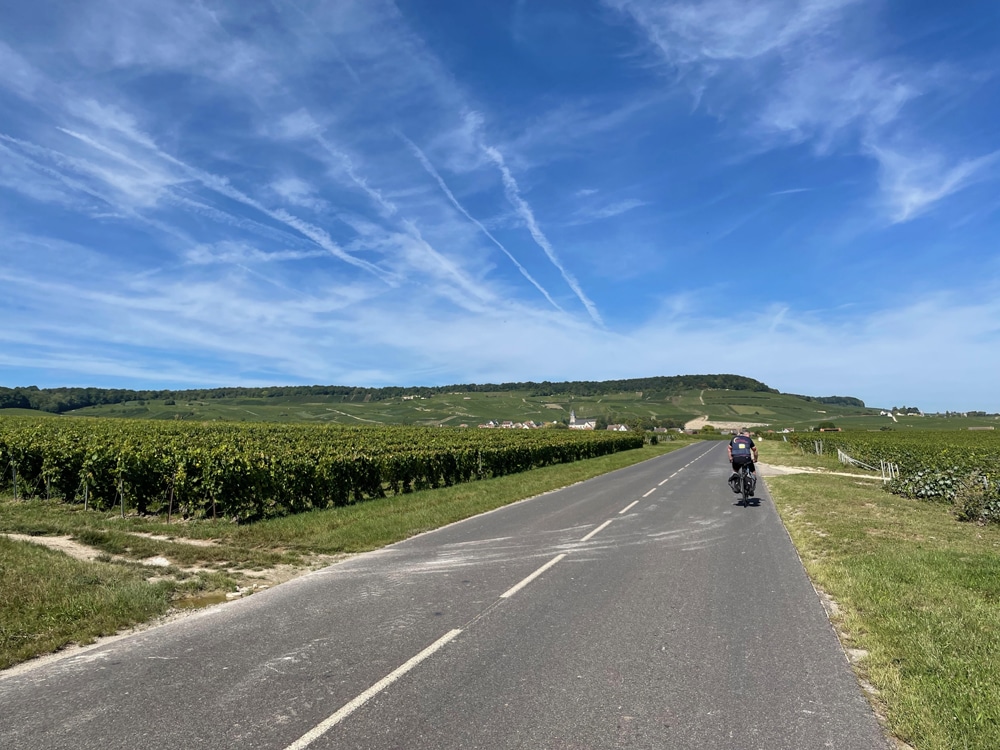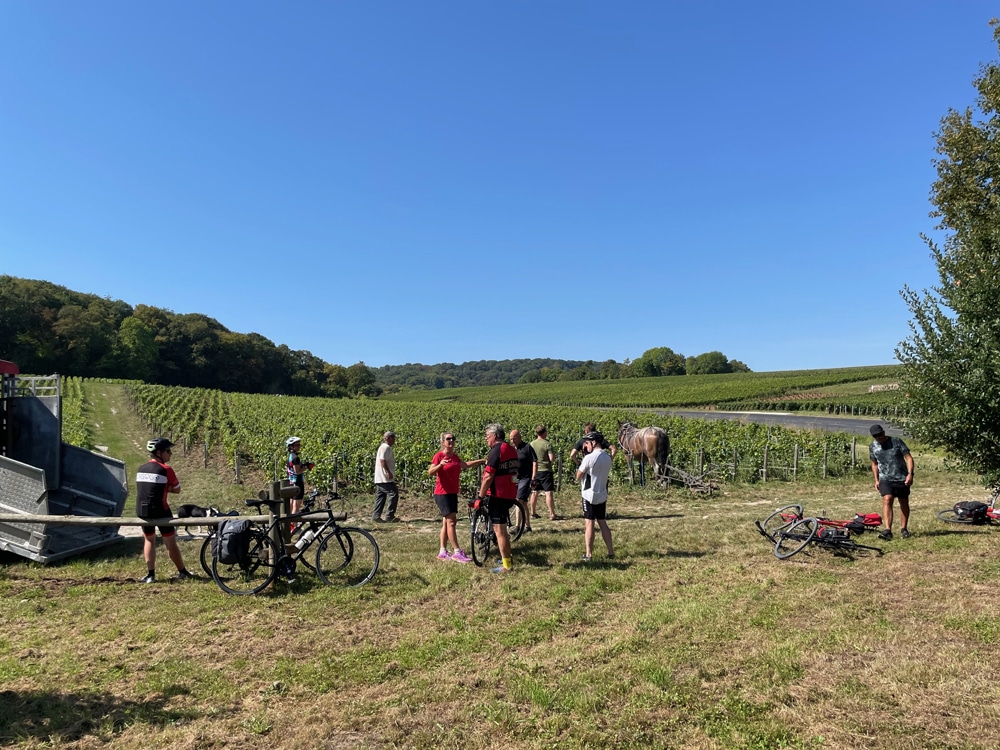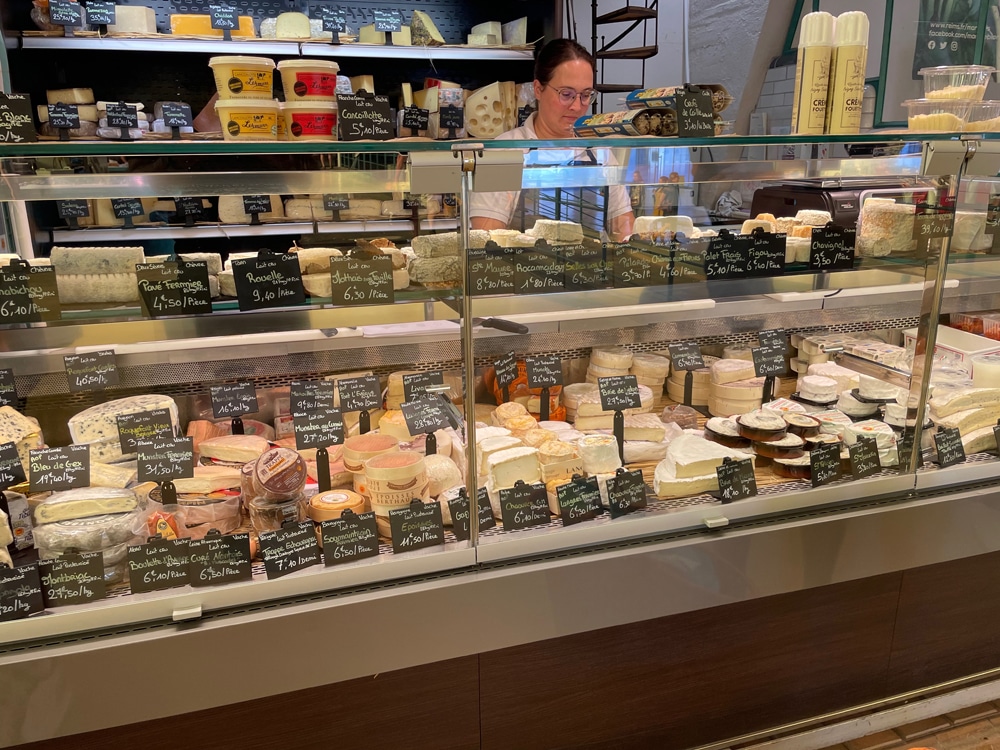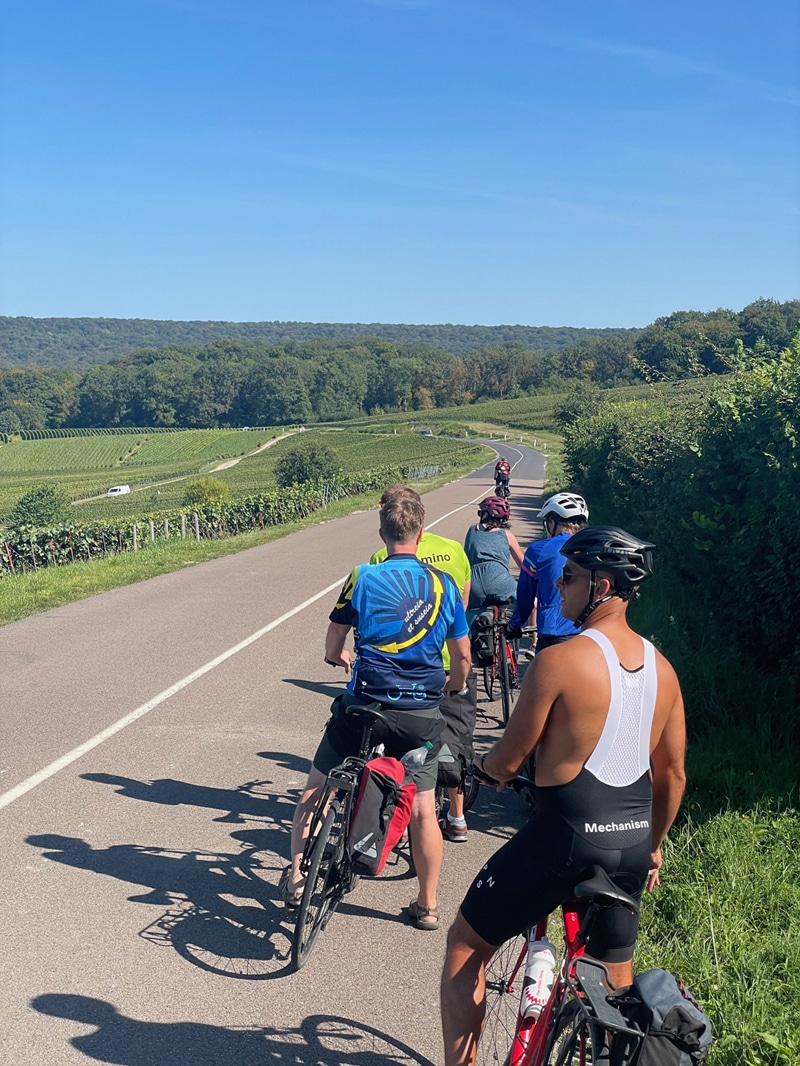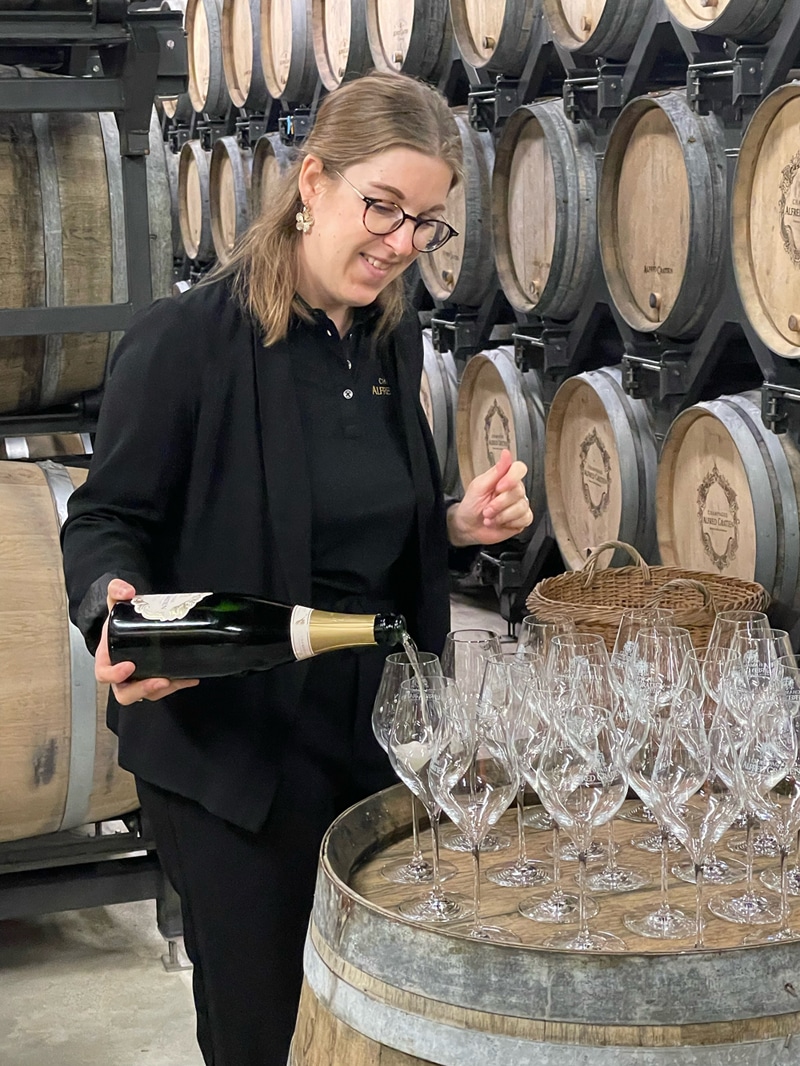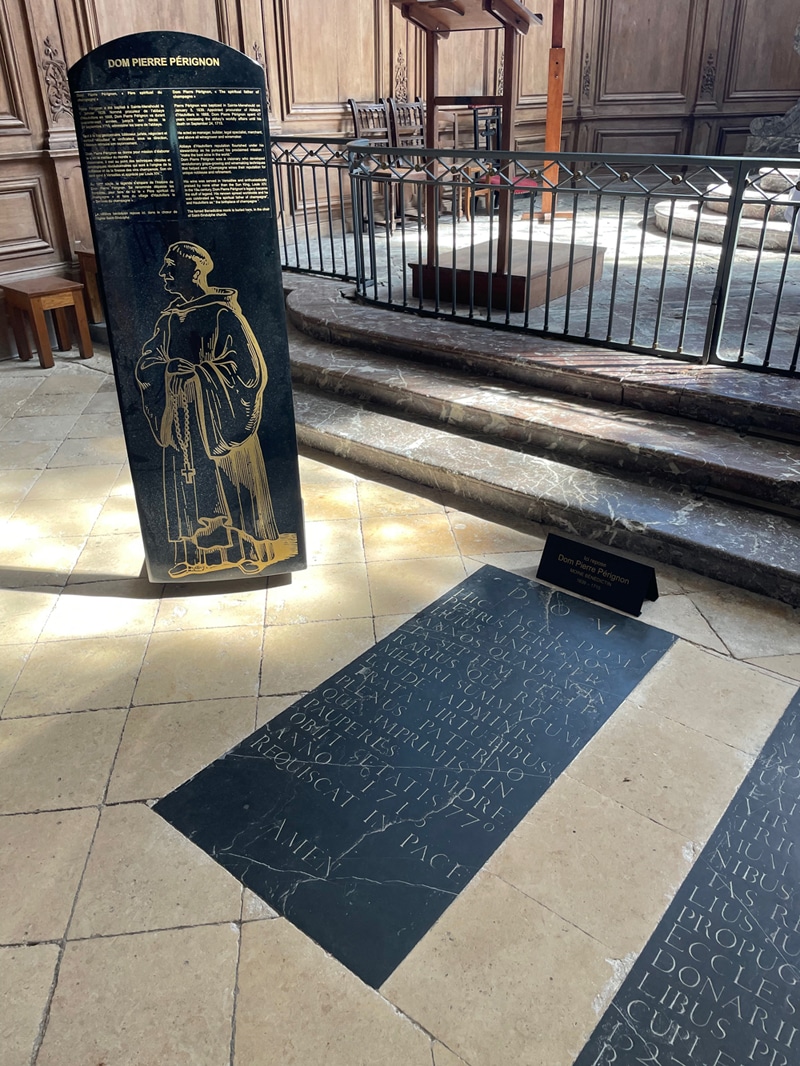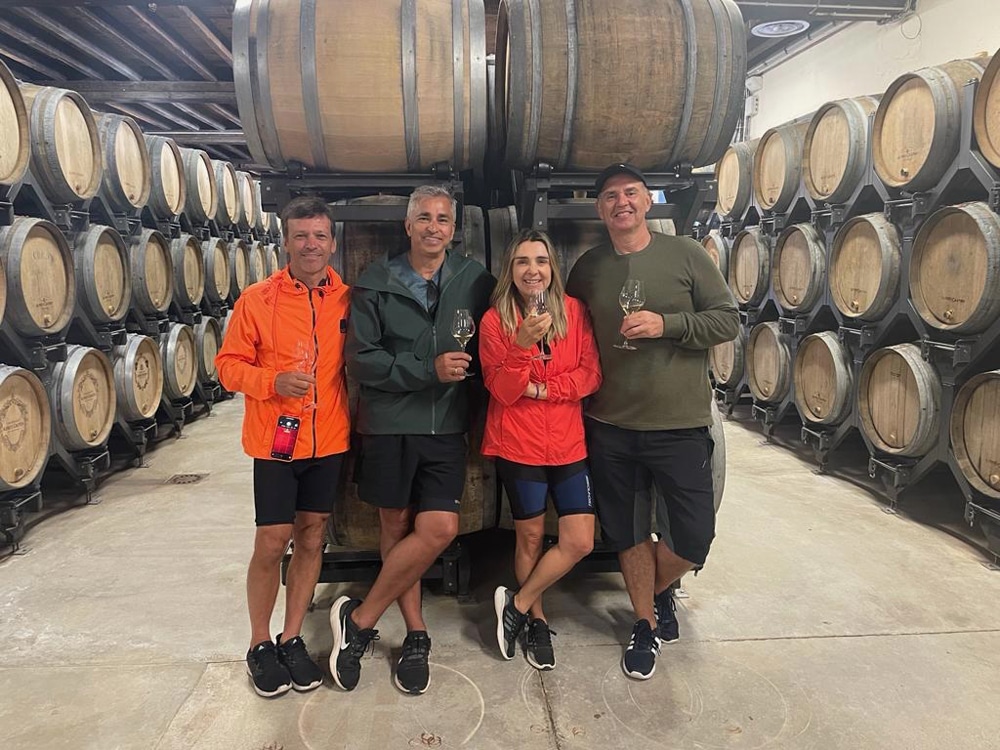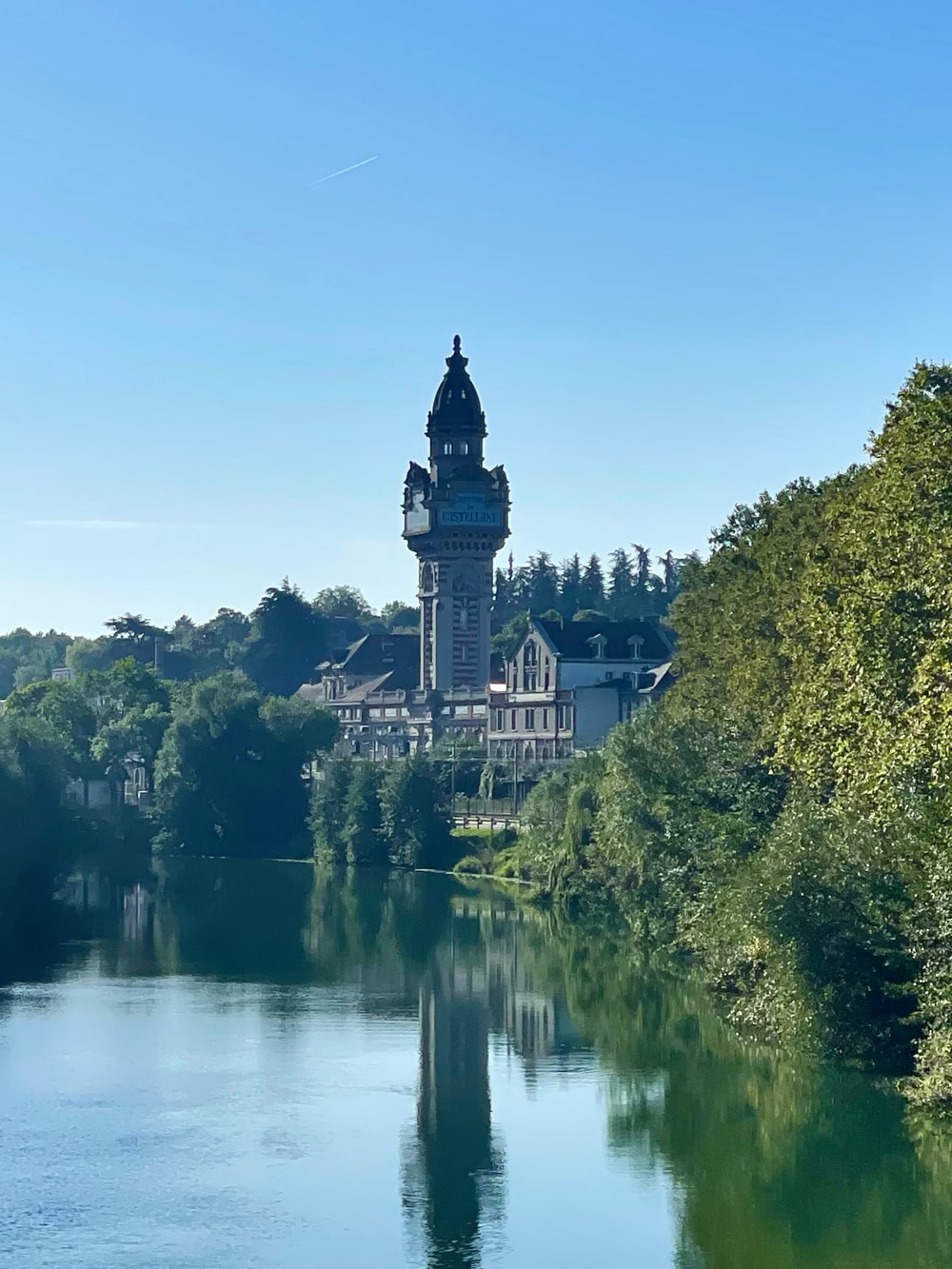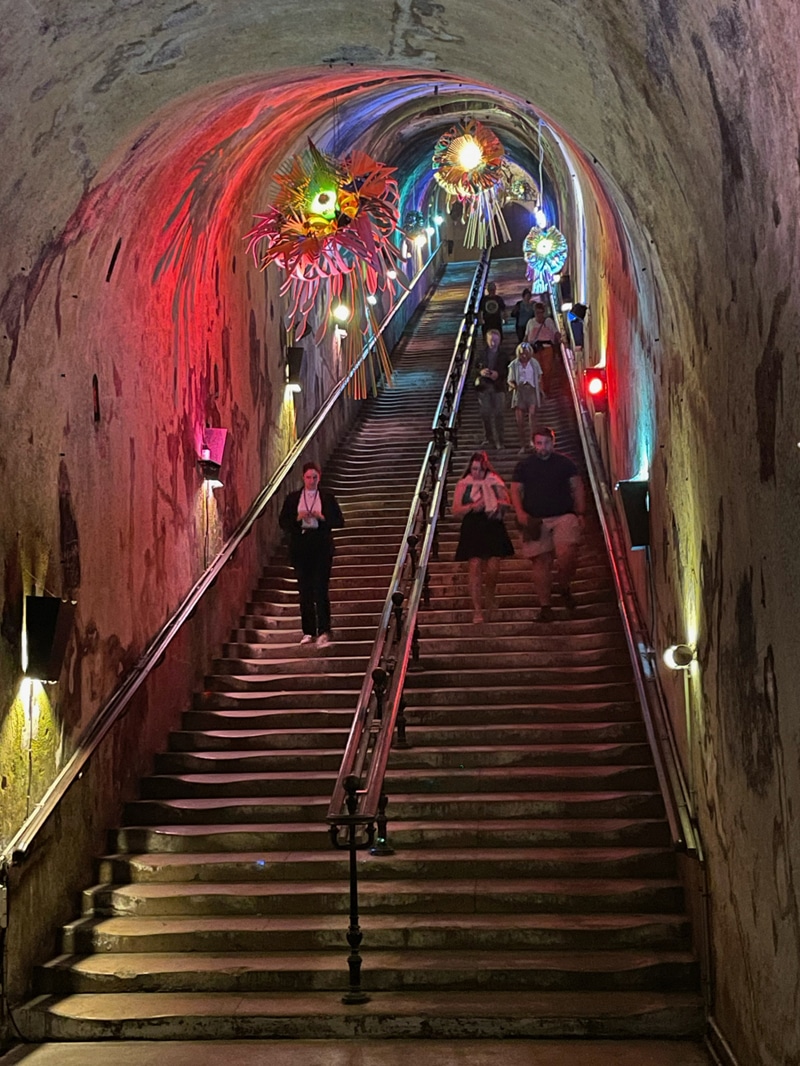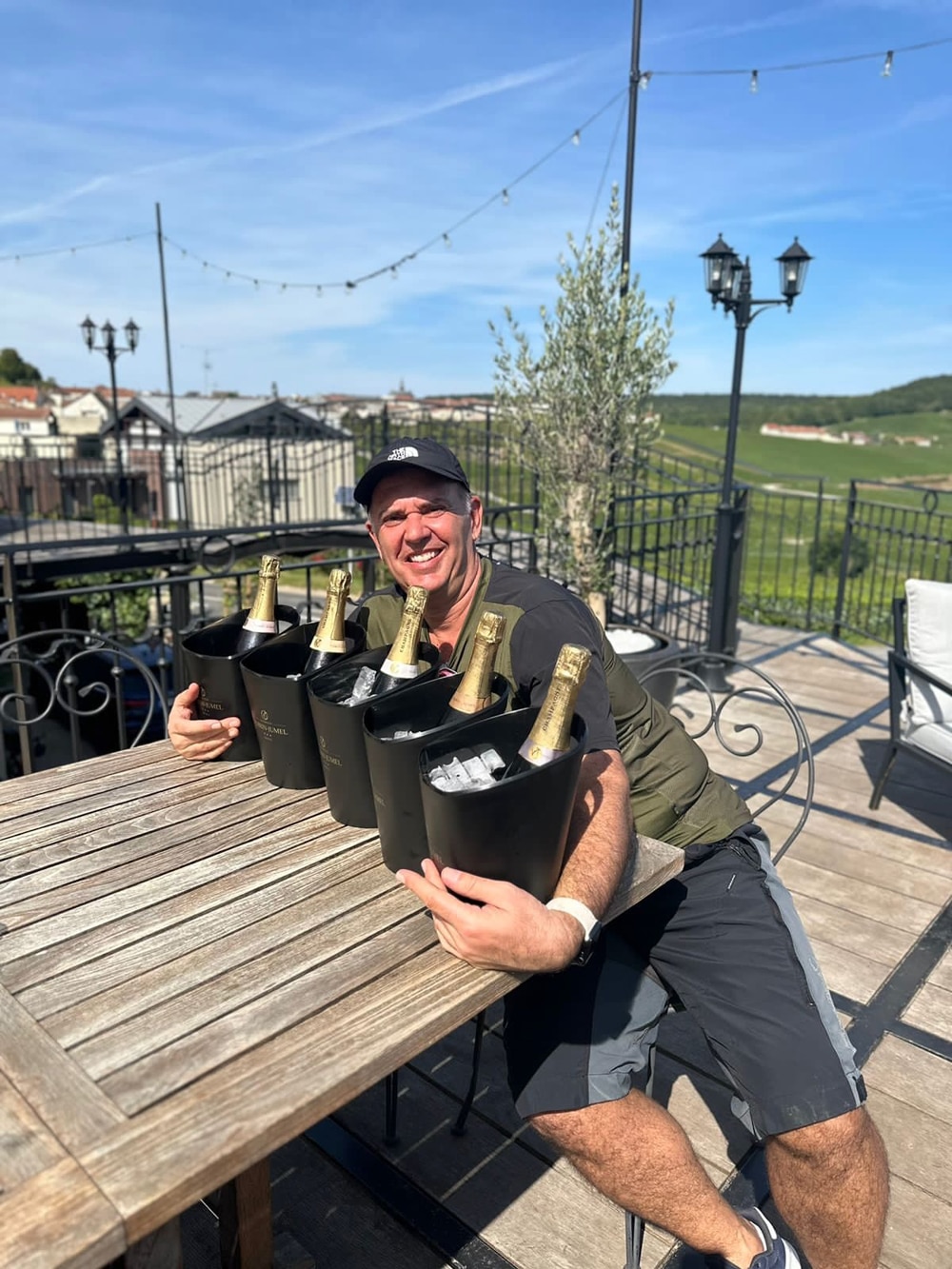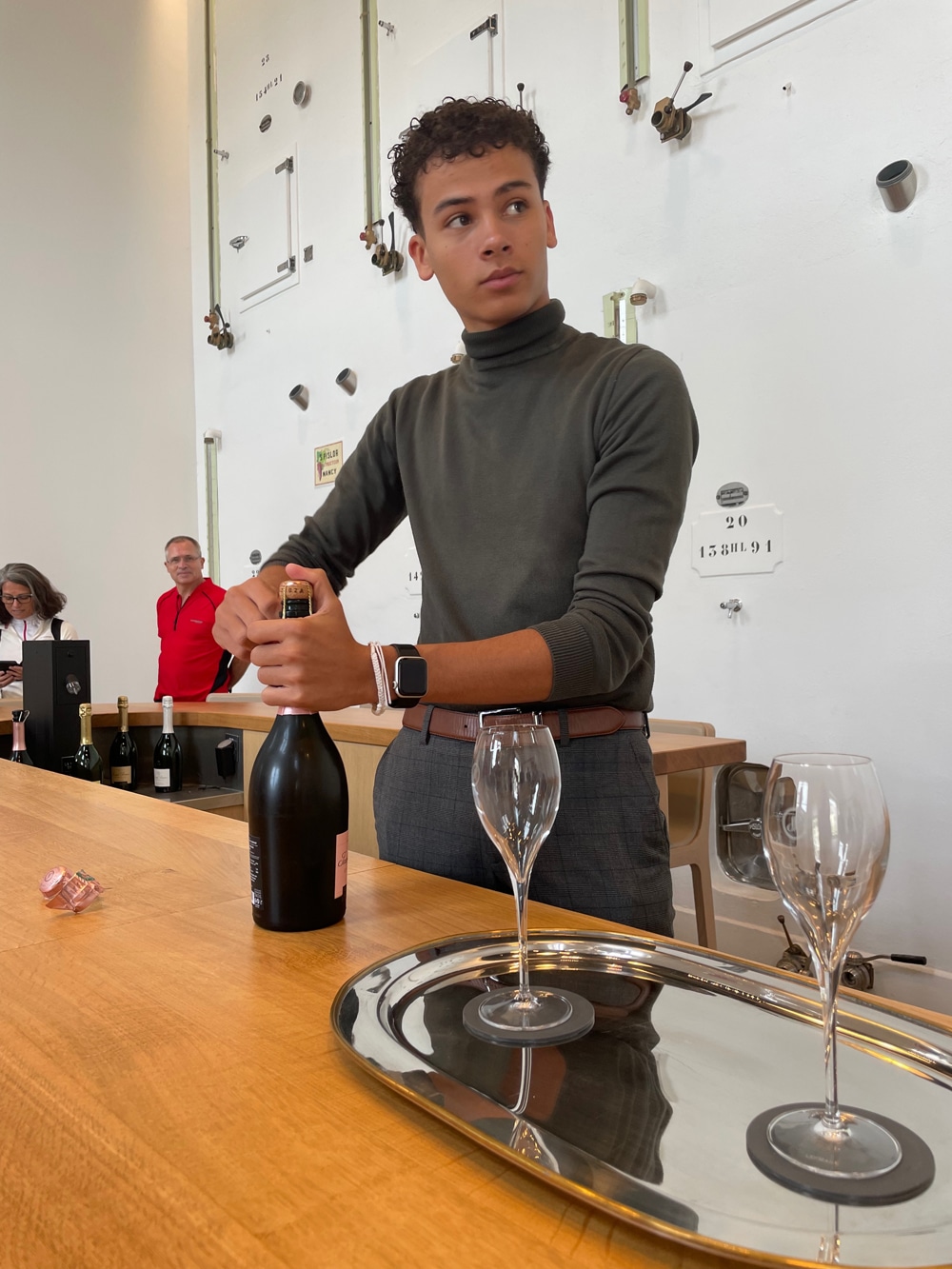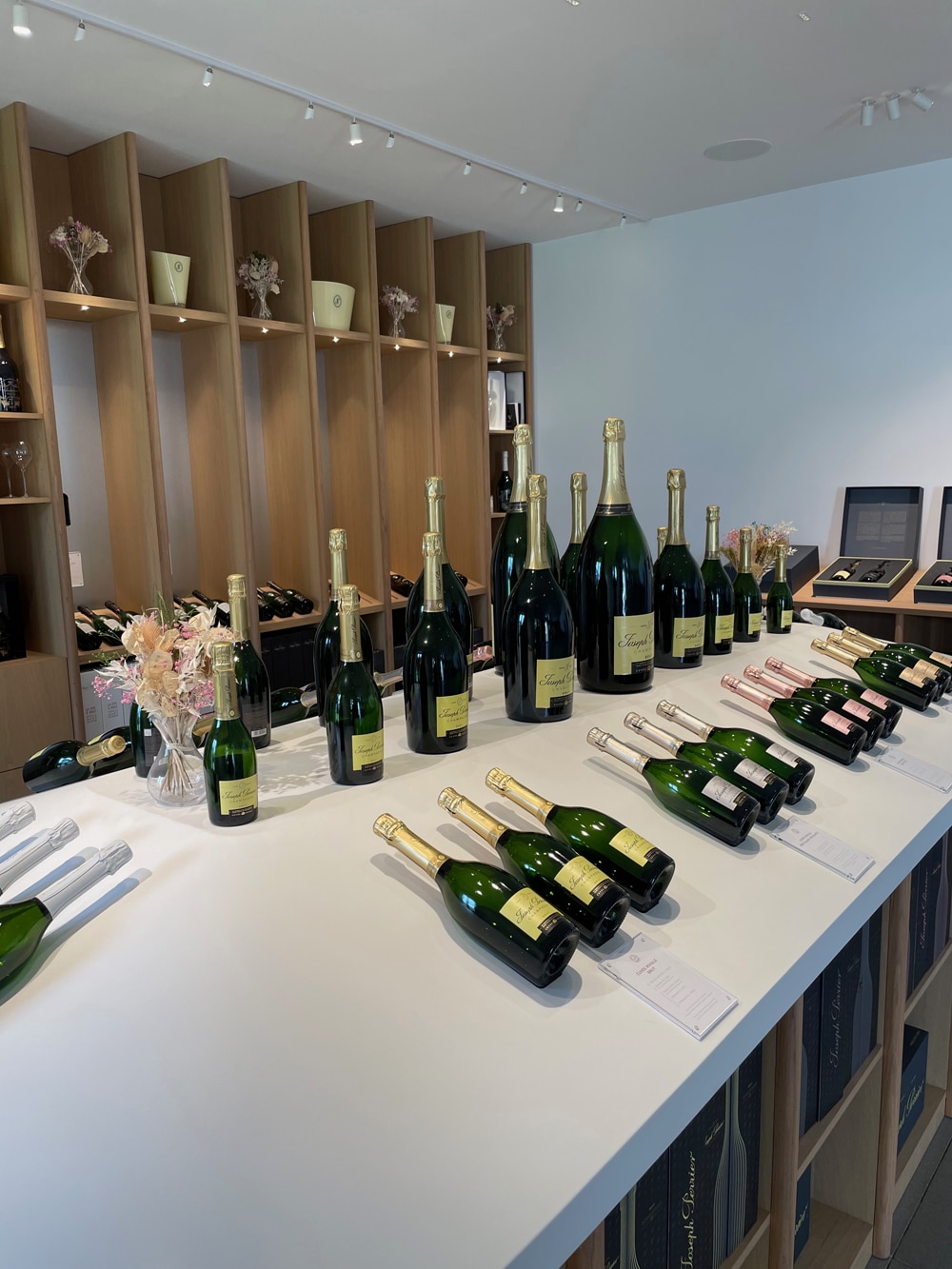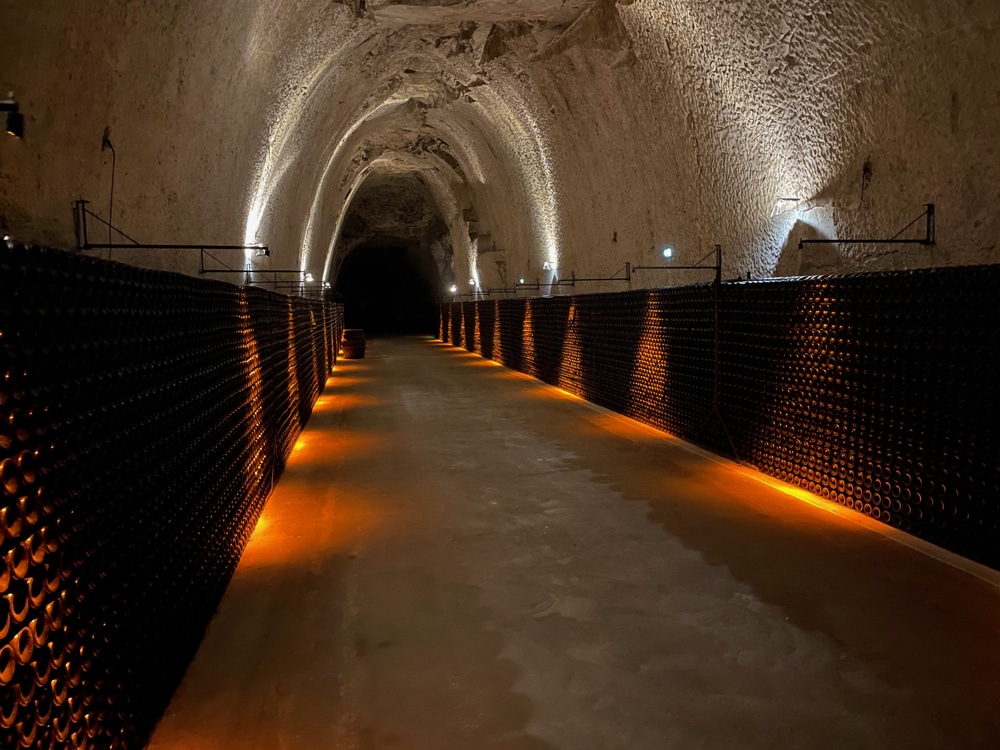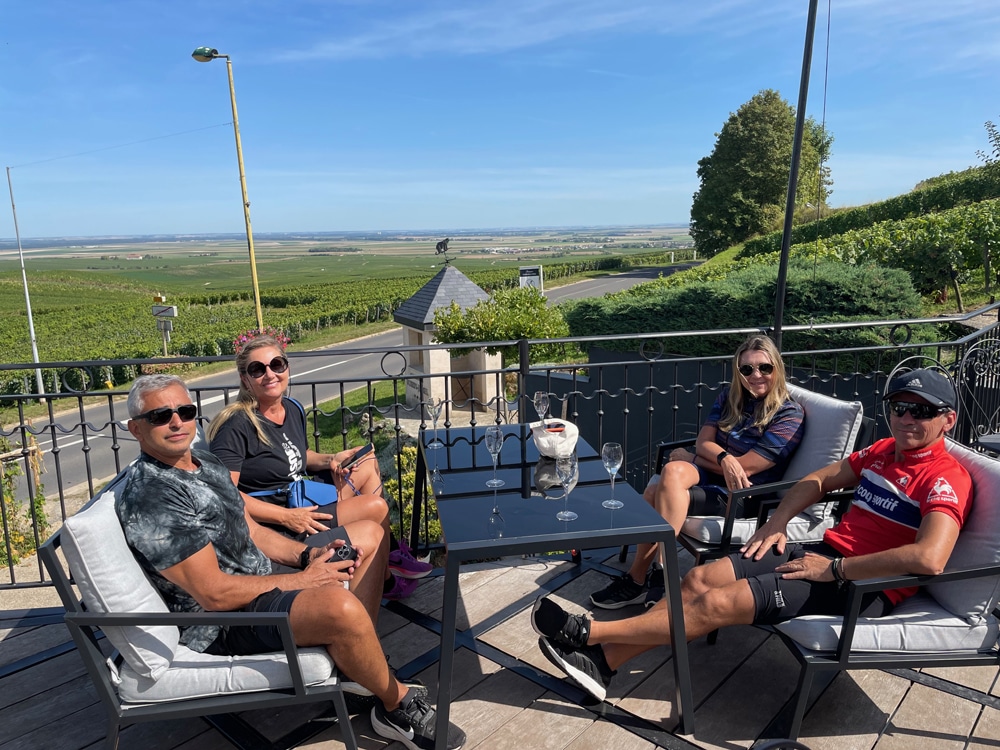What to expect
Everybody's heard of Champagne.
Of course we're going to be exploring the wines of Champagne on our tour - we'll learn about the origins of Champagne, what Dom Perignon did do, and what he definitely didn't do. We'll separate the myths from the facts, and we'll discover what grapes they're allowed to use, and where they grow. Our teachers will be the winemakers in our schedule of vineyard vineyards over the course of the week.
But what about the region, and the cycling?
The appellation is the largest in France, and the grapes are spread across 3 ranges of hills, the Massif de Saint Thierry, the Montagne de Reims, and the Cotes des Blancs. Some of these sound a bit grander, a bit higher, a bit tougher than they really are. Fear not, there's nothing too scary here, but grapes do best on gentle slopes that face to the south and East, so there are definitely hills. Our job is to get close enough to get in among the vineyards, without having to slog up too many hills!
We'll also explore Reims, not just the capital of Champagne but also the city where all of France's Kings and Queens (and one emperor) were crowned. We'll visit two UNESCO World Heritage sites, the spectacular Cathedral of Our Lady of Reims and the Basilica of St Remy, where the first King of France, Clovis I, was converted to Christianity. This is also where the Second World War ended. Absolutely true, read on (see Thursday).
The cycling's good, too. The vineyards look particularly beautiful among the rolling hills of the Montagne de Reims and the Cotes des Blancs. And we'll cycle along the Marne Valley, with the vineyards of the Rive Gauche and Rive droite on either side of us.
FROM
- Single Room Supplement: +£380
- Join in London +£320
- Join in Paris +£130
- Transfer from Train Station: +£20
- Airport Transfer: N/A
- Self-Drive: Nil
- Available Dates 2024:
August 17-24

ITINERARY
Day 1 Arrive in Chalons-en-Champagne
We start our tour in Chalons-en-Champagne, the administrative capital of Champagne. Tonight we'll stay at the Hotel Spa Le Renard in the centre of Chalons, close to the Canal St Martin and the River Marne.
Chalons is connected to Paris by direct trains, a journey of about 1 hour 40 minutes.
We'll eat in the centre of Chalons tonight.
Day 2 Chalons-en-Champagne to Vertus
Leaving Chalons, immediately we'll cross over the River Marne, and ahead of us we'll see the Cotes des Blancs (the hills of the whites). This is a reference to the hills south of Épernay where they grow predominantly Chardonnay grapes, white grapes.
There are 7 grape varieties that can be used to make Champagne, provided they're grown within the boundaries of the appellation. But almost all champagne is made from 3 - Chardonnay, Pinot Noir, and Pinot Meunier.
The two pinots are black grapes. You may be familiar with the label on some Champagne bottles 'Blanc de blancs' - white from whites. This indicates a Champagne made from 100% Chardonnay grapes, which in turn will almost always tell you that the grapes were grown on the Côte des Blancs, in the hills that stretch 20 Km south from Épernay.
Today is quite a short cycling day, and we'll start our day with a tasting in Chalons' last remaining Champagne House, Joseph Perrier - a beautiful chateau, with amazing tunnels and delicious champagne. Just stretching our tasting muscles as we make our way to the southern end of the Cotes des Blancs!
We're headed for Vertus, in readiness for our assault on the vineyards, which will start tomorrow! We'll be on tiny roads, as we make our way through the villages of Pocancy and Villeneuve, finishing at the Le Relais du Vigneron in Vertus. Tonight we'll eat in the centre of the village.
Day 3 Vertus to Épernay
Big day today. And believe it or not, it's mostly downhill!
From Vertus we will cycle down through the Cotes des Blancs all the way into Epernay. And today we'll start learning about Champagne.
An important part of understanding how the region of champagne has developed is the process of making the wine. Champagne is the northern-most wine-producing region in France. There was always the risk of cold autumns, and problems with ripening the grapes. Champagne wines were often acidic, low in alcohol, and inconsistent. All of the following is important, I'm afraid!
Champagne producers are allowed to blend wines of previous years, which they do to create a 'house-style'. These wines don't have a year on the label, but they have been blended by experts. A 'vintage champagne' is a wine produced with grapes from just one year - where the owner or the œnologue thought the harvest was good enough, ripe enough, to produce its own wine.
Champagne makers traditionally add a 'liqueur' to the wine, basically sugar solution, after the alcoholic fermentation, and this stimulates the secondary fermentation, allowing growers to make a more consistent wine.
But it still wasn't the champagne as we know it. A number of things had to happen. Firstly, in the UK glass-makers were using coal in the glass-making process. In France they had used wood, and this wasn't hot enough to produce glass strong enough to withstand the pressure of Champagne.
Corks had already begun to be used by monks in Limoux to store wines in bottles, which produced an air-tight seal. So if the secondary fermentation takes place in-bottle, the carbon di-oxide produced by the fermentation is absorbed into the wine. At the beginning of the 19th Century, Barbe-Nicole Clicquot (that's the Widow Clicquot, or Veuve Clicquot to you and me) invented the process of ‘remouage‘. After the second fermentation, champagne made in-bottle was cloudy with dead yeast, or ‘lees’.
Winemakers would clarify their sparkling wine by decanting their wine from bottle to bottle, a process that was time-consuming, wasteful, and damaging to the wine. Mme Clicquot invented the idea of the remouage table - a board with holes drilled large enough to accomodate the neck of a champagne bottle. The bottles could be agitated a little each day, and tilted a little more each day, until after several weeks you had an upside-down bottle of wine with all the sediments collected in the neck.
The final piece of the jigsaw was the invention of the 'muselet' in 1844, the wire cage used to secure the cork in the neck of the bottle. Now, sparkling wines could be produced consistently, and stored safely in-bottle.
The neck of the bottle is then frozen, and the bottle opened. The frozen plug of ice and sediment would fly out under pressure, and the bottle could be re-sealed with a cork, a muselet, and a foil collar (to hide the irregular levels following disgorgement). At the point of disgorgement, typically a small amount of sugar solution is added, known as ‘dosage’, to affect the level of sweetness of the wine. Even ‘Brut’ wine has a ‘dosage’ added at bottling. And because of the ‘shock’ to the wine during disgorgement, champagne was typically stored for many months at a steady temperature, often in underground caves and quarries, before being sold.
So the process of making Champagne is a long, capital-intensive process that means holding onto valuable wines for several years. This is why, in Champagne, there is almost always a division between the people who grow the grapes, and the people who make the wine. Farmers grew the grapes, and (mostly German) industrial companies owned the machinery and processing equipment.
So most companies who make champagne - although these days they do often grow some of their own grapes - will typically buy-in grapes from many, many growers.
Today, we will visit two champagne-makers in the Cotes des Blancs, either side of lunch. You'd expect them to be growing exclusively white grapes, Chardonnay. But for the reasons outlined above, we'll find blends as well as Blancs de Blanc.
First, we'll visit Champagne Launois Père et Fils (Le Mesnil-sur-Oger), and it's beautiful museum of champagne machinery.
After lunch, we'll visit Champagne Voirin Jumel (Cramant). Both of these Houses produce a 'Grand Cru'. This is something different, certain villages where the terroir is considered particularly good, able to produce a high-quality, and importantly a distinctive wine. Voirin Jumel produce a 'zero sugar' champagne. Brave, a side-effect, I'm afraid, of global warming, and I hope these visits will re-set your appreciation of Champagne!
Today is a short ride, just 27 Km, and mostly downhill, so we should get to the Hotel Champagne in the centre of Épernay in good time.
Day 4 Return to Épernay, Please!
Today we explore the River Marne. Famous, of course, as the scene of two huge battles in the First World War - the First Battle of the Marne, an Allied victory that led to the 4 years of trench warfare, and the second Battle of the Marne, which was the Germans' last offensive, and essentially the precursor of the end of the war.
Reims suffered horribly, but Épernay, which is actually on the River Marne, not so much. The fighting in the Marne Valley took place further downstream, towards Paris, and we don't cycle that far.
The Marne is a 500-Km long tributary of the Seine, and runs through both Épernay and Chalons-en-Champagne, the administrative Capital of Chapagne. It's significance for us lies in what can't grow in the valley downstream from Épernay.
The most renowned vineyards of this region lie in Aÿ-Champagne and Mareuil-sur-Ay, both Grand Crus. In Aÿ, we'll visit a fascinating, new museum, Le Pressoir, 'a sensory journey to the heart of champagne'. I wouldn't borrow their marketing line if I didn't love this place. We discover Champagne through our 5 senses, and finish with a tasting of two different champagnes.
Then we head down the River Marne. West of Épernay, Pinot Noir and Chardonnay won't ripen on the South and North facing slopes either side of the river, so this is Pinot Meunier country. We'll head out on the Right bank, and cross after lunch at Reuil. As soon as we hit the Left bank, we're climbing, through beautiful vineyards and the tiny villages of Oeuilly, Montvoisin and Villesaint. We're headed for Champagne Boursault, a magnificent chateau once the private estate of the one-and-only Veuve Clicquot.
Suitably refreshed from our tasting (!), we cycle back to the cycle path along the Marne and make our way into the centre of Épernay.
A great day, some beautiful cycling, and two champagne houses that I doubt we'll find at home.
Day 5 Épernay to Reims
Today is a fairly short ride, at 23 miles, but that includes crossing the Montagne de Reims, so we'll earn our dinner tonight.
We'll have a leisurely start at one of the highlights of our week, a visit to Alfred Gratien, one of very few Champagne makers who ferment their wines in oak barrels.
For many years - perhaps all of the 20th Century - Champagne suffered from a structural problem around quality. Fabulous marketing - truly fabulous - and the reliability of the almost industrial-style production process meant Champagne was both in high demand, but widely available. As a grower, if you grew the correct grape varieties within the geographical region of Champagne, it was a sellers' market. There was no incentive to produce excellent grapes, or to bother ripening the grapes. If the grapes were the correct variety from the right place, they could be sold at a premium, and the growers had no connection to the quality of the wine.
This is emphatically not true any more. And I don't think anybody explains this better than Alfred Gratien. Beautiful cellars, delicious champagnes, a 4th generation Cellar Master, a wonderful place to visit.
Leaving Alfred Gratien, we'll cross back over the River Marne for a final time, and make our way to the Abbey of Hautvillers. This was the seat of the most famous winemaker in Champagne's history - Dom Perignon.
The story of Dom Perignon is just wonderful. The blind monk who invented the process of producing sparkling wine, and called out to his colleagues "Come quickly! I am tasting the stars!"
OK, so he wasn't blind, didn't come within 100 years of producing a sparkling wine, and certainly never uttered the late 19th century marketing slogan about tasting stars. What did he do?
Well, he introduced the idea of blending to the region, we can give him that. Dom Perignon is now the name given to the prestige cuvée of Moet et Chandon, the largest champagne house of all, and they put a lot of effort into promoting the myths around Dom Perignon. He was a renowned wine maker, he was a significant figure in the history of winemaking in Champagne, so we'll stop at his Abbey and pay our respects.
We'll probably have lunch in Hautvillers if we're sitting down, or shortly after if we're having a picnic. Climbing out of Hautvillers, we head North, crossing the Montagne de Reims, through Nanteuil-la-Foret and Sermiers, and then the long descent into Reims.
Reims is amazing, as we'll discover tomorrow, but coming from Épernay there's no beautiful way into the town centre. It's safe, mostly on designated cycle routes and shared-use pathways, but it ain't beautiful. Reims is worth it, but forewarned is forearmed, eh?
Day 6 A Tour Of Reims
Today is a very different beast. We're on our bikes, but we're exploring in and around Reims. So we have an easy, but absolutely fascinating day.
First-off, while we're in Reims, the centre of Champagne-making, we'll visit one of the big Champagne houses. The one we choose is Vranken-Pommery.
Louise Pommery is another of the giant figures in the history of Champagne. After becoming widowed (a bit of a theme in Champagne history!), Mme Pommery purchased a vast collection of chalk pits, originally excavated by the Romans. She had these pits connected by tunnels to create vast cellars that allowed Pommery to store their wines at a constant temperature. All the big Champagne houses have these cave networks, but Mme Pommery did it first.
Her 2nd great contribution was arguably more significant. Until the late 19th Century, Champagne was a sweet drink, sweetened at the 'dosage' stage just prior to storing. It was served as a dessert wine, with sugar levels as high as 300 grammes per litre. To put that in context, modern Brut champagnes must have less than 12 gm of sugar per litre. And that process was started by Louise Pommery, who having been educated in England, thought that the English would queue up for a drier sparking wine.
There's another startling fact about the Vranken-Pommery estate, which they don't make a big thing of. In 1914, the German army captured Reims. The French army recaptured Reims, driving the Germans out of the town centre, and into the surrounding hills, from where they destroyed Reims over several years of artillery fire. Reims was almost flattened, and that includes the Cathedral. Much of the population retreated into the caves and galleries below Vranken-Pommery. We'll explore these galleries, and remember that during the First World War, they set up schools, even hospitals, in these same caves.
Quick stop before lunch, the Basilica of St Remi. This is the site of the conversion to Catholicism of Clovis I, the first King of the Franks. This event pre-dates the Abbey subsequently built on the site (by about 500 years!) but is memorialised by a statue.
The Abbey was very heavily damaged in the First World War (like everything in Reims) but was meticulously rebuilt after the war, and what we see today is effectively a facsimile of the original abbey, a Romanesque building, as opposed to all the gothic cathedrals we're used to (like the one up the road that we'll see in a minute). That means less knowledge about the supportive role of buttresses, thicker walls, smaller windows and less light. An interesting contrast to the Cathedral of Our Lady of Reims, a classic gothic cathedral.
(What is a Basilica? Whatever else a Catholic building of worship might be, it can be appointed as a 'Basilica' by the Pope. Notre Dame is, Saint-Denis is, the Abbey of St Remi is, but Reims Cathedral isn't.)
We'll take lunch in the centre of Reims, before visiting the Cathedral of Notre Dame de Reims, a beautiful gothic cathedral. Believe it or not, this was also largely destroyed in the First World War. Everything in Reims is less than 100 years old, give-or-take, and it's a point of interest that when Reims was rebuilt, Art Deco was all the rage in architectural circles, which explains why you'll see so many examples of the art deco style in Reims. But some buildings were rebuilt in their original style - notably the cathedral and the basilica. But it is new. The stained-glass windows are fantastic, among my all-time favourites.
Back on our bikes, we'll head out past the Hotel Azur to what I think is Reims' best-kept secret. This is where the 2nd World War ended.
As the Allies moved into Germany, General Eisenhower established the Supreme Headquarters Allied Expeditionary Force in Europe (SHAEF) in a school in Reims. Following Hiter's suicide on April 30th, 1945, Admiral Dönitz became the Nazi leader. On May 6th he authorised General Jodl to surrender to the Allies. There was a fascinating stand-off; Jodl offered to surrender all German troops on the Western front. Eisenhower's response was that the Allies would close the German border, forcing the Germans to surrender to Russia. Dönitz's bluff was effectively called, and the unconditional surrender document was signed in the Reims HQ on May 7th, 1945.
Stalin wasn't very happy, he thought the surrender should be in Berlin, and include Russia. So the whole charade was re-enacted the following day on May 8th. which is now celebrated as Victory in Europe Day (VE Day). But the war ended the day before, in Reims. Come and check it out.
The museum is still in the grounds of a school - how cool is that? The signing room is still there, with the actual desk. It's a spine-tingling experience.
On our way back to the hotel, we'll cycle right past the Porte de Mars. Built in the 3rd Century, this is the widest Triumphal Arch in the Roman World. Yes, of course we stop and have a look!
And back to the hotel before an evening stroll and dinner in Reims. We've only cycled 8 Km, but today is a wonderful day.
Day 7 Reims to Chalons-en-Champagne
We're done with Reims, so this morning we head straight out of town on the bikes we rode in on. But today we're on a lovely bike path alongside the Canal du Marne. To our right we'll be able to see the Montagne de Reims, which we'll be cycling over later.
We leave the canal at the Port of Sillery, where we can pick up picnic stuff, weather permitting, and we're heading up the Northern side of the Montagne de Reims to one of the leading Champagne villages, Verzenay.
We're now in the middle of Pinot Noir territory, and we're heading for our first tasting at Champagne Jacques Rousseaux.
By now, I hope we'll have learnt enough this week to know that while we're surrounded Pint Noir vines, don't be surprised to discover we'll be tasting blends including Chardonnay, but also a 'Blancs de Noir', a white Champagne made from a blend of 3 different parcels of Pinot Noir.
Pinot Noir is the most common of all the grape varieties in Champagne - just - and this is the grape that is used to add structure and texture to a blend. The sensation of filling-your-mouth that you get from certain champagnes - that's the job of Pinot Noir. Believe it or not, there is more Pinot Noir in Champagne than in Burgundy, regarded as the home of Pinot Noir!
Leaving Verzenay we're headed through Verzy, and across the Eastern end of the Montagne de Reims. Nothing to get too worried about, our total ascent for the whole day is under 500 metres. There's a wonderful ride down the other side, on our way to Ambonnay, and our final champagne-tasting of the week - we're all experts by now. We'll visit Champagne Serge Pierlot in the village, where they produce Grands Cru, and vintage champagnes to end our tasting week. This should be a good test of everything we've tried to learn.
From Ambonnay, a gentle trundle down to the canal-port of Condé-sur-Marne, and we'll follow cycle paths alongside the canal and the Marne back to the Hotel Spa Le Renard in Chalons.
Day 8 Onwards and Upwards!
We're not too far from Paris and Charles de Gaulle airport, so we can expect a leisurely breakfast and then fond farewell to our various corners of the world.
JOINING DETAILS
Please take careful note of the train times. Our transfers are scheduled to meet these designated trains; if these train times are inconvenient, please contact us so that we can be sure of arranging appropriate transfers.
Quick links

